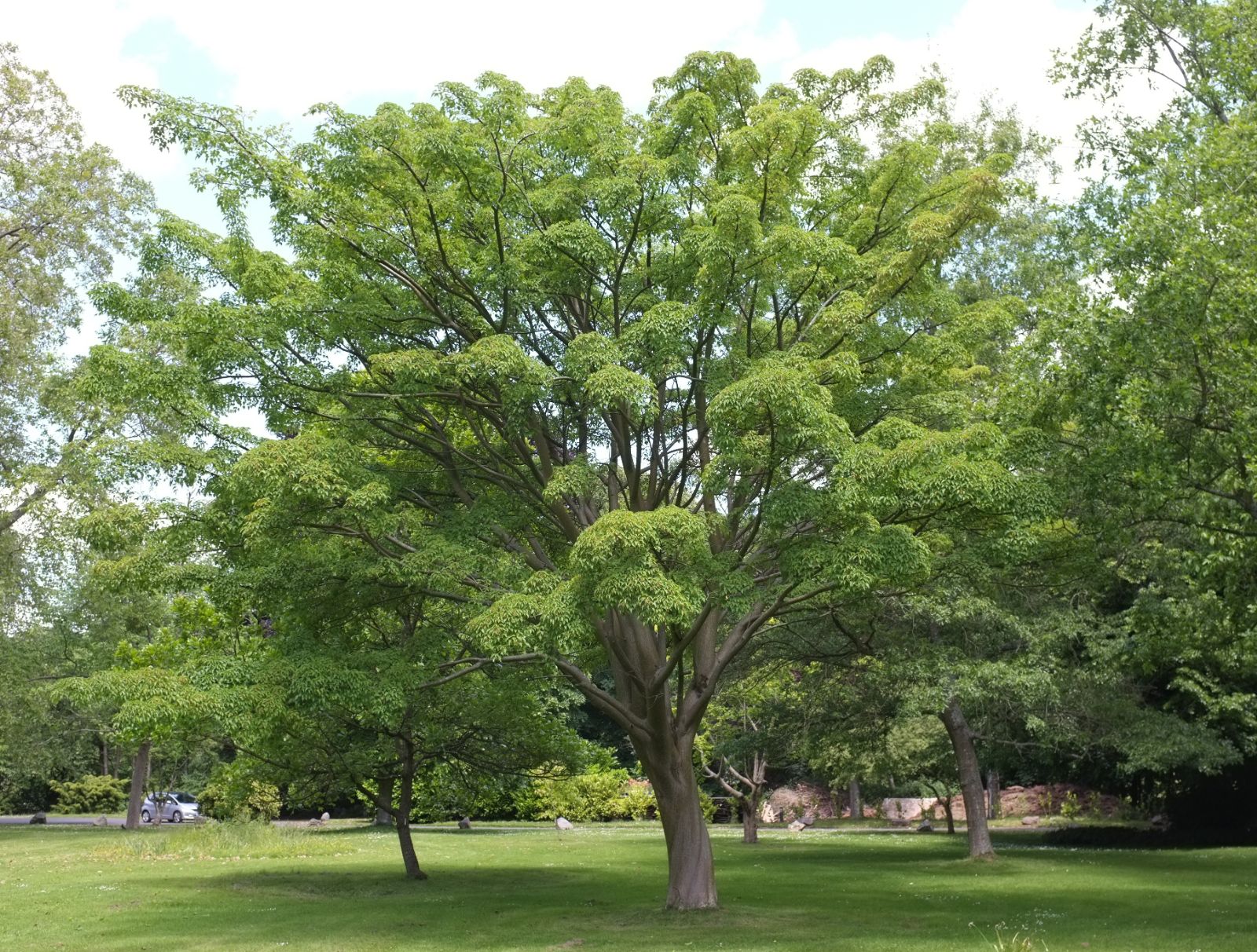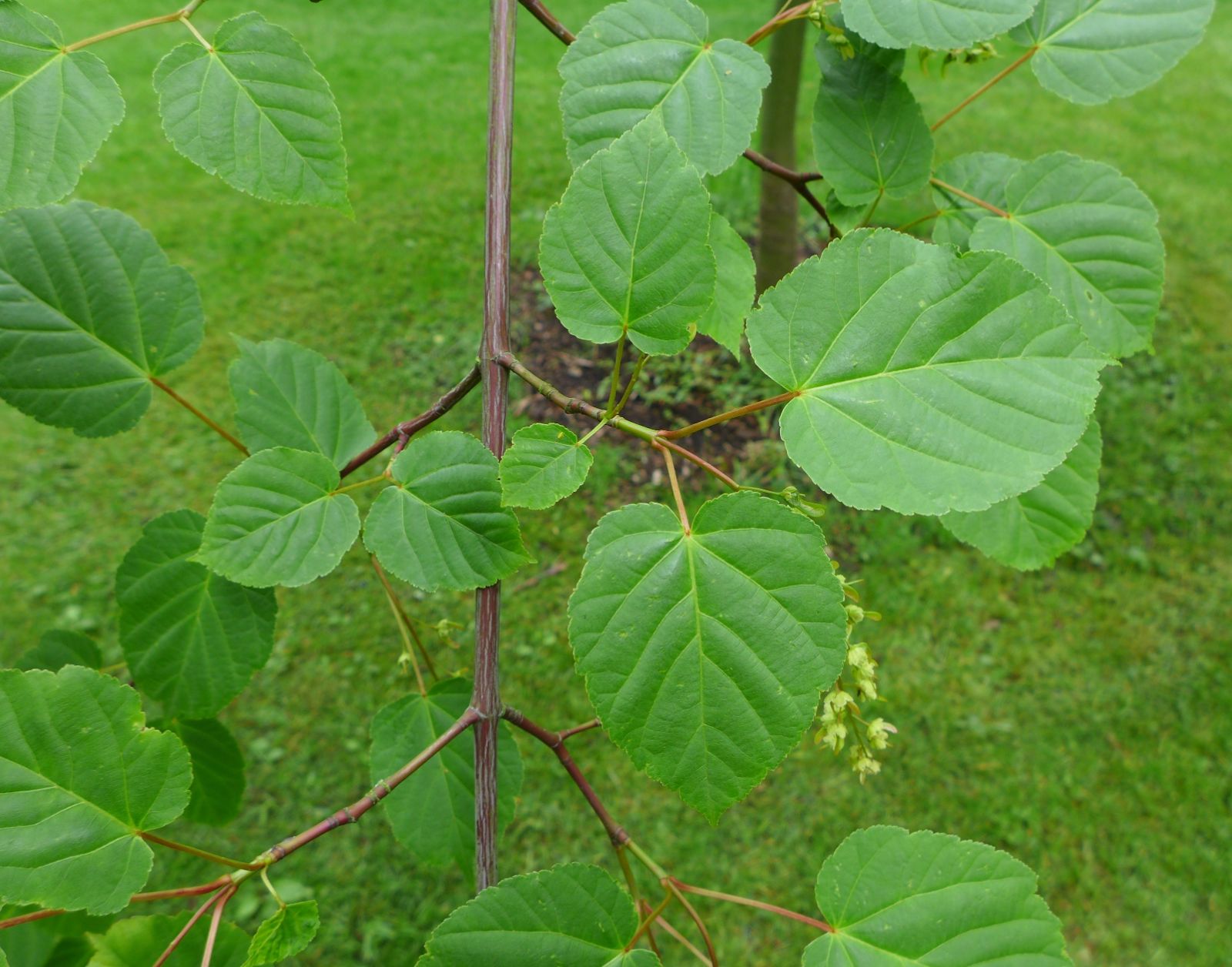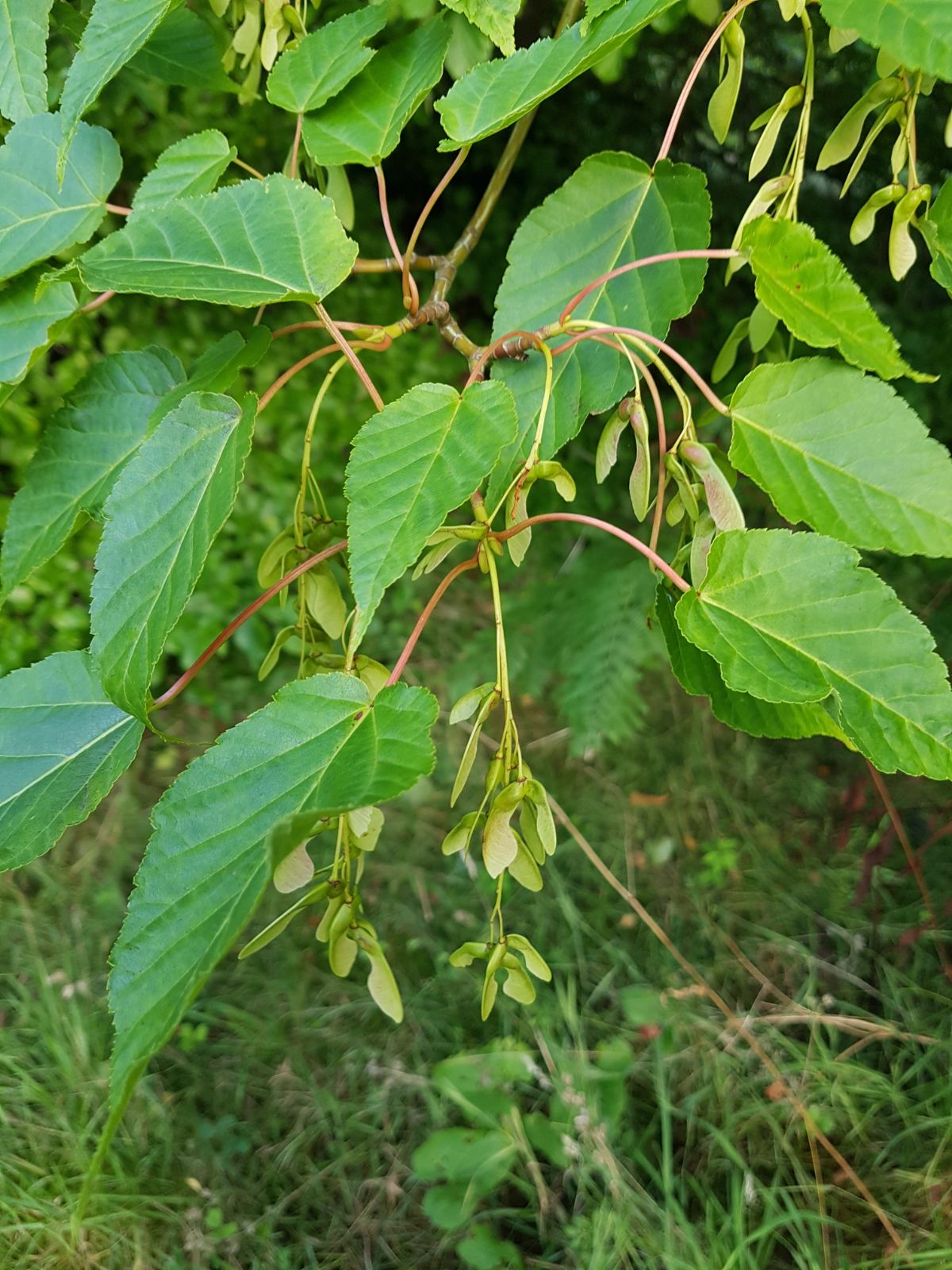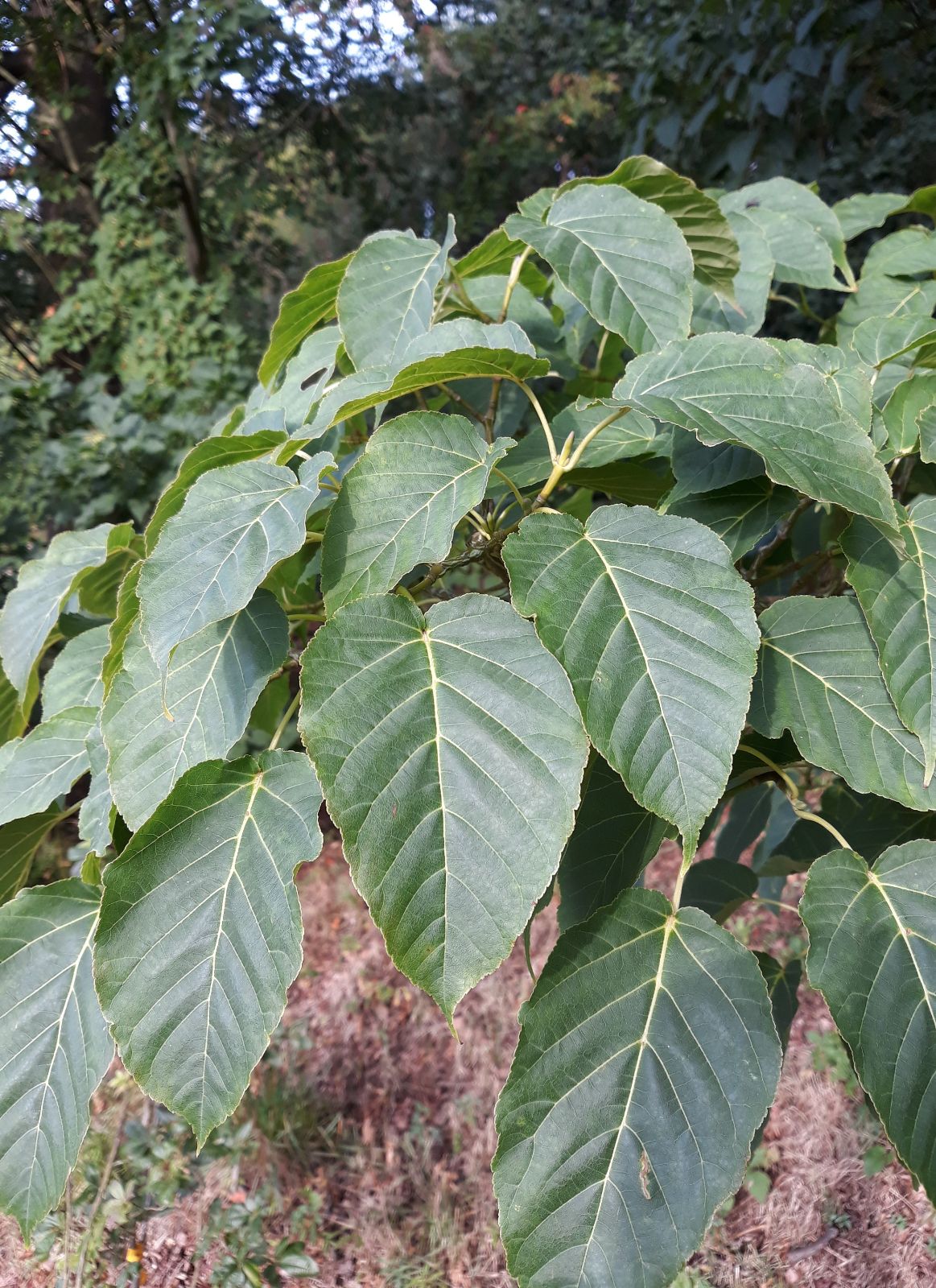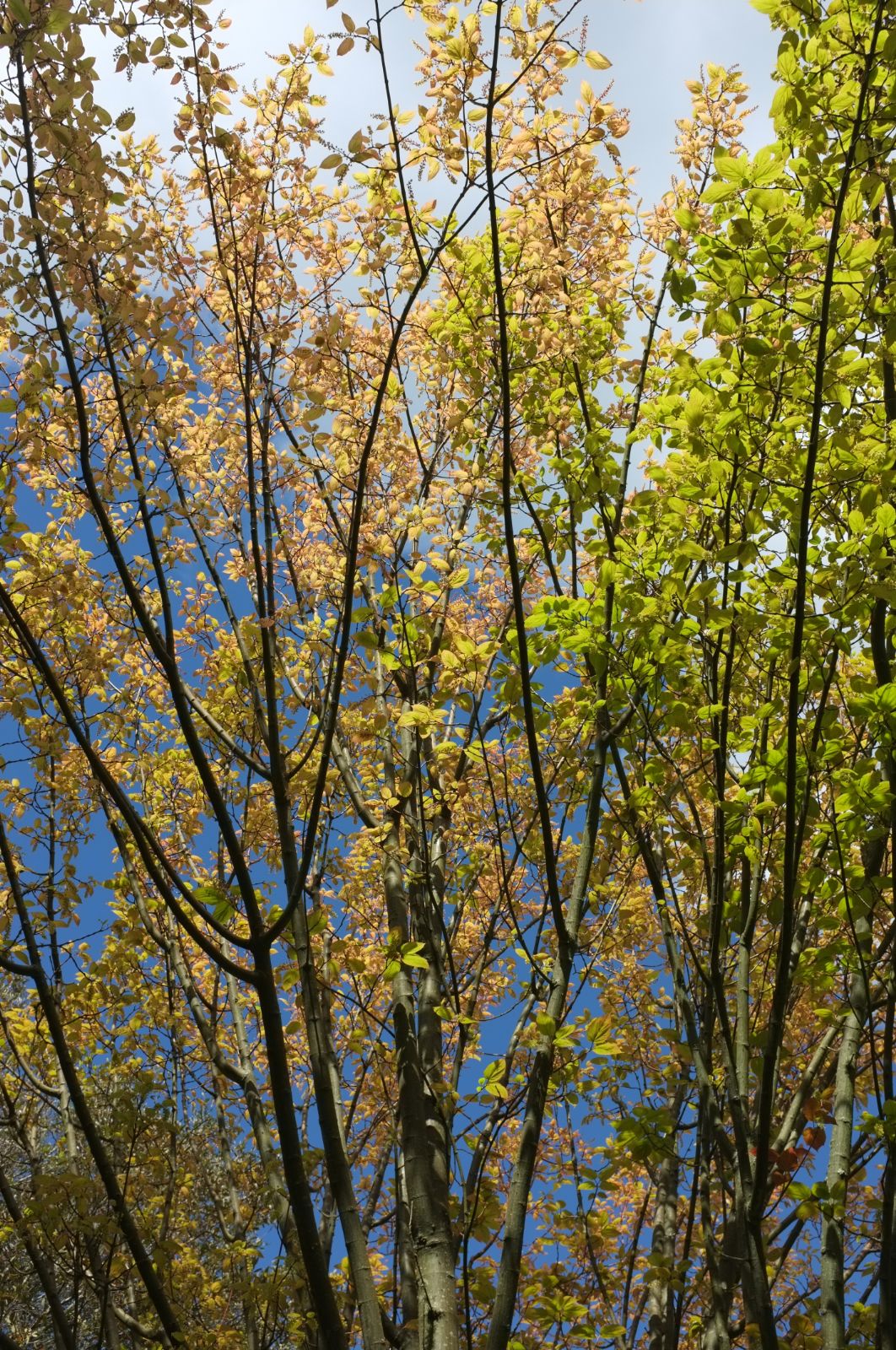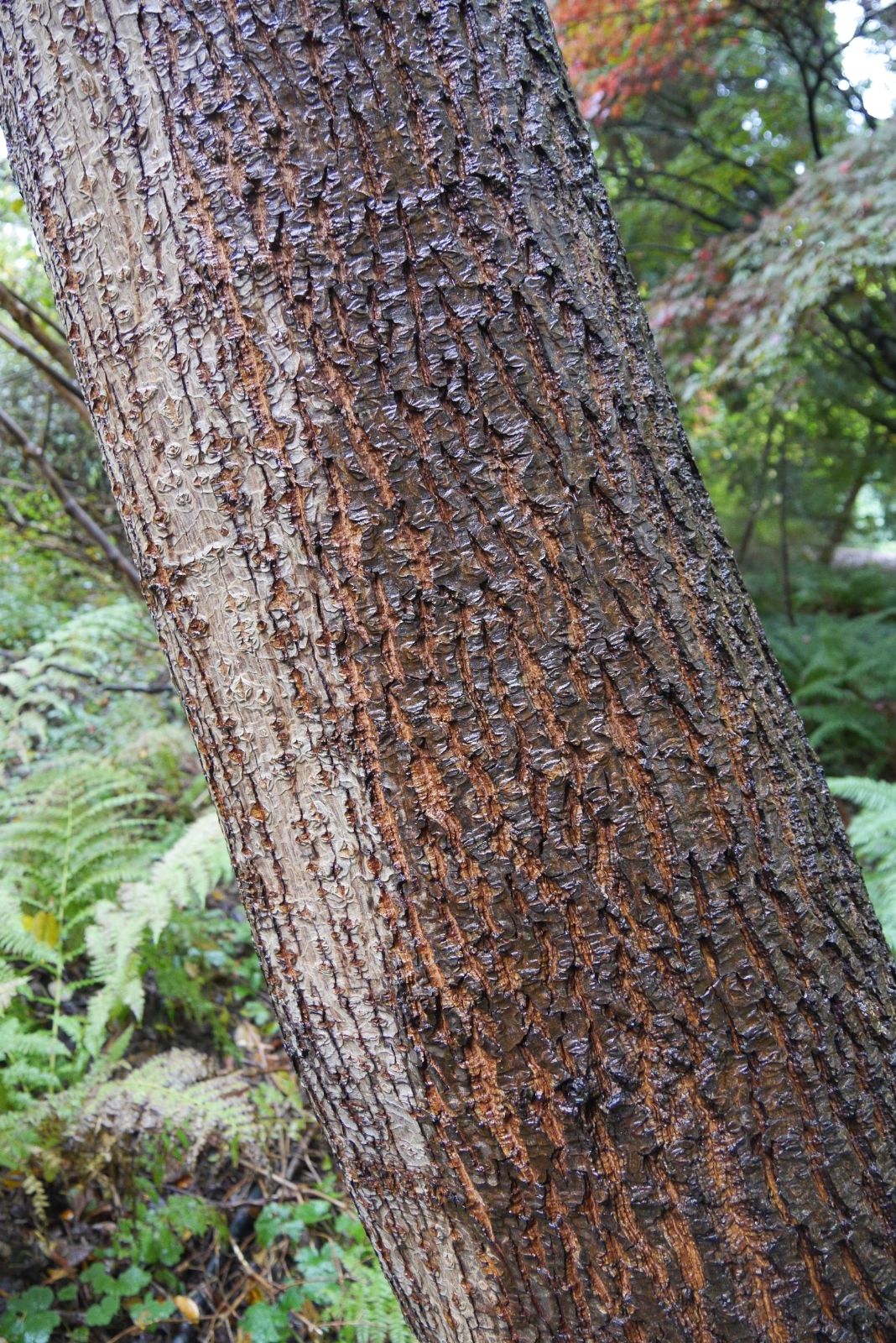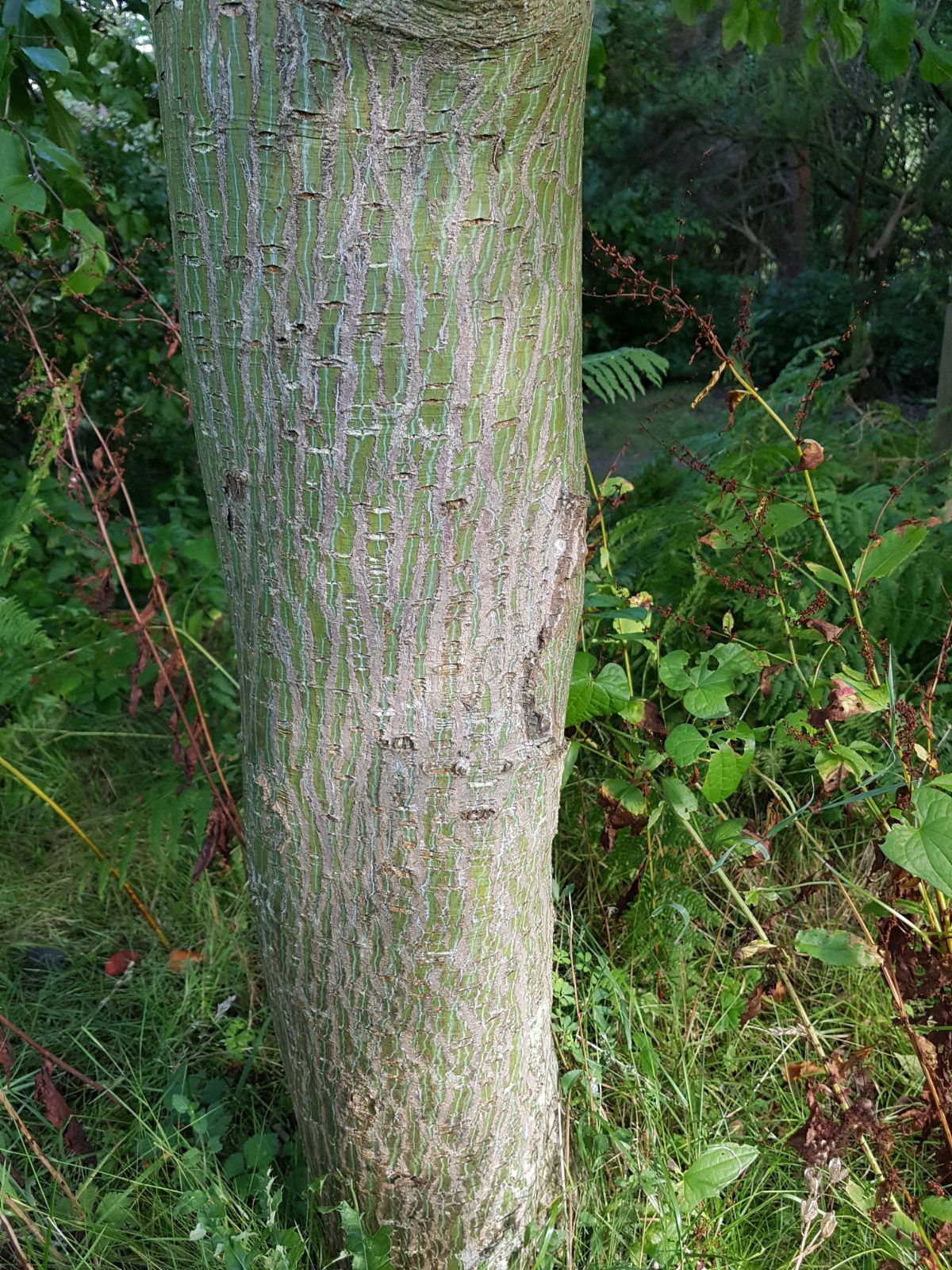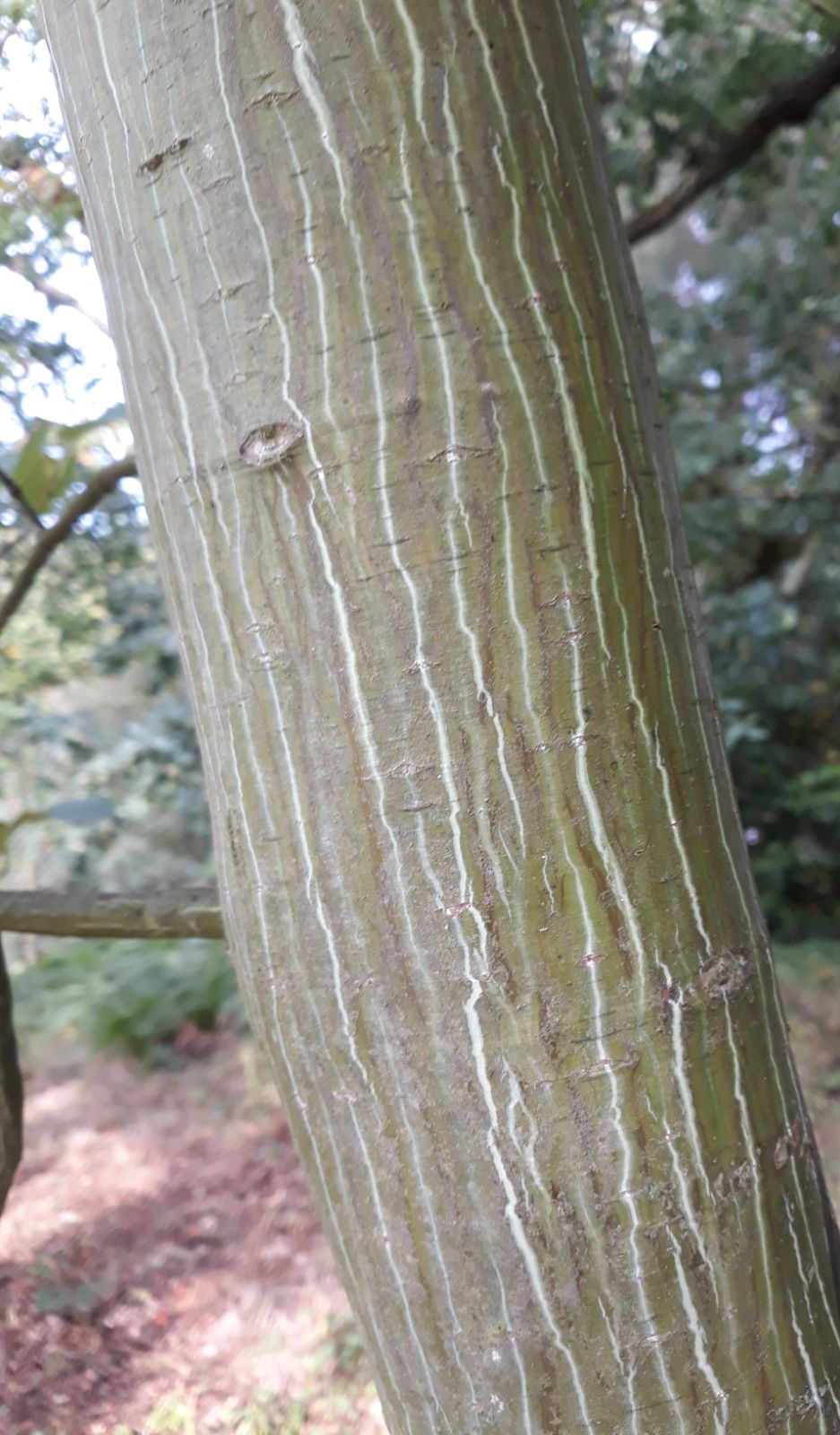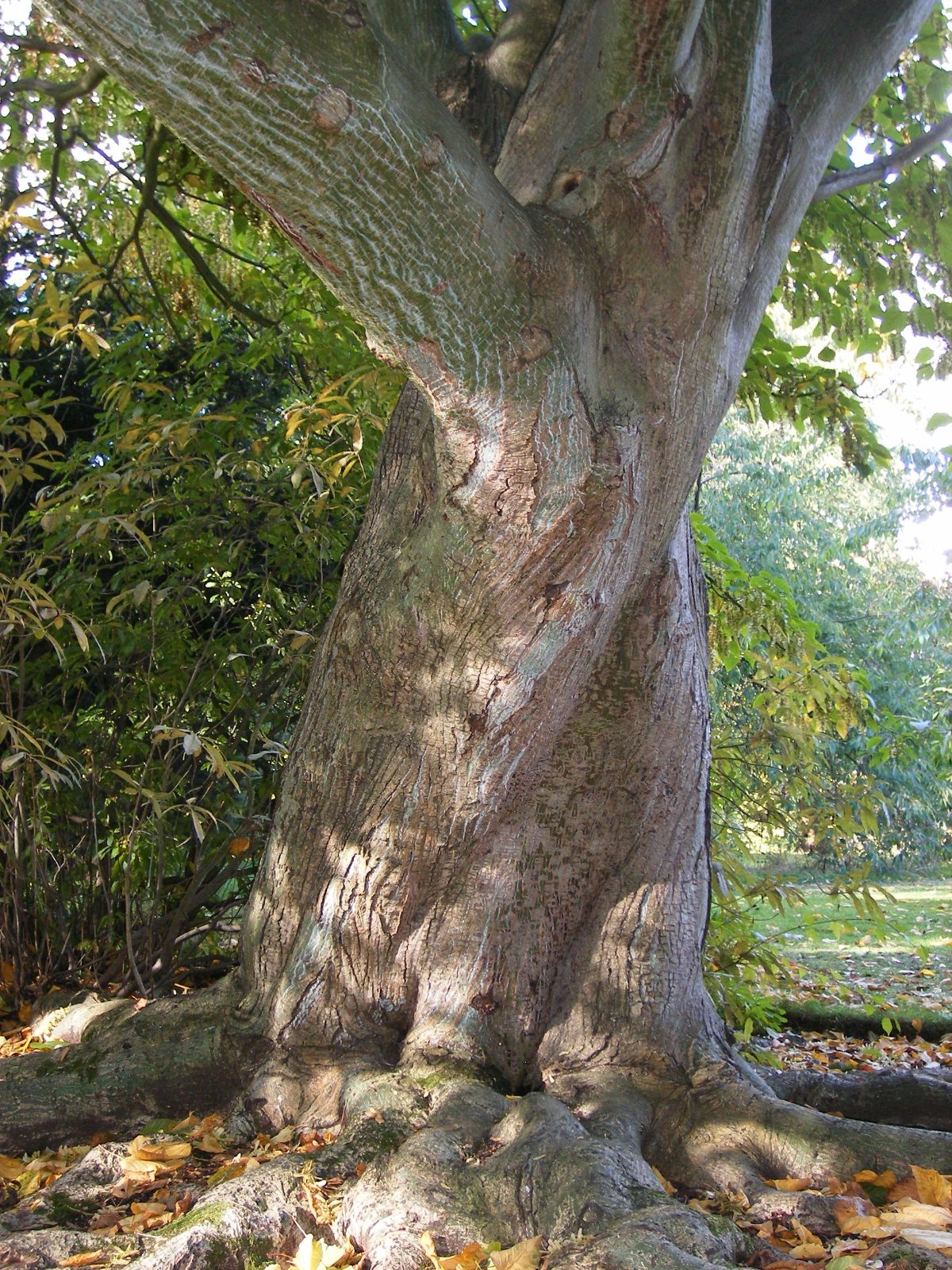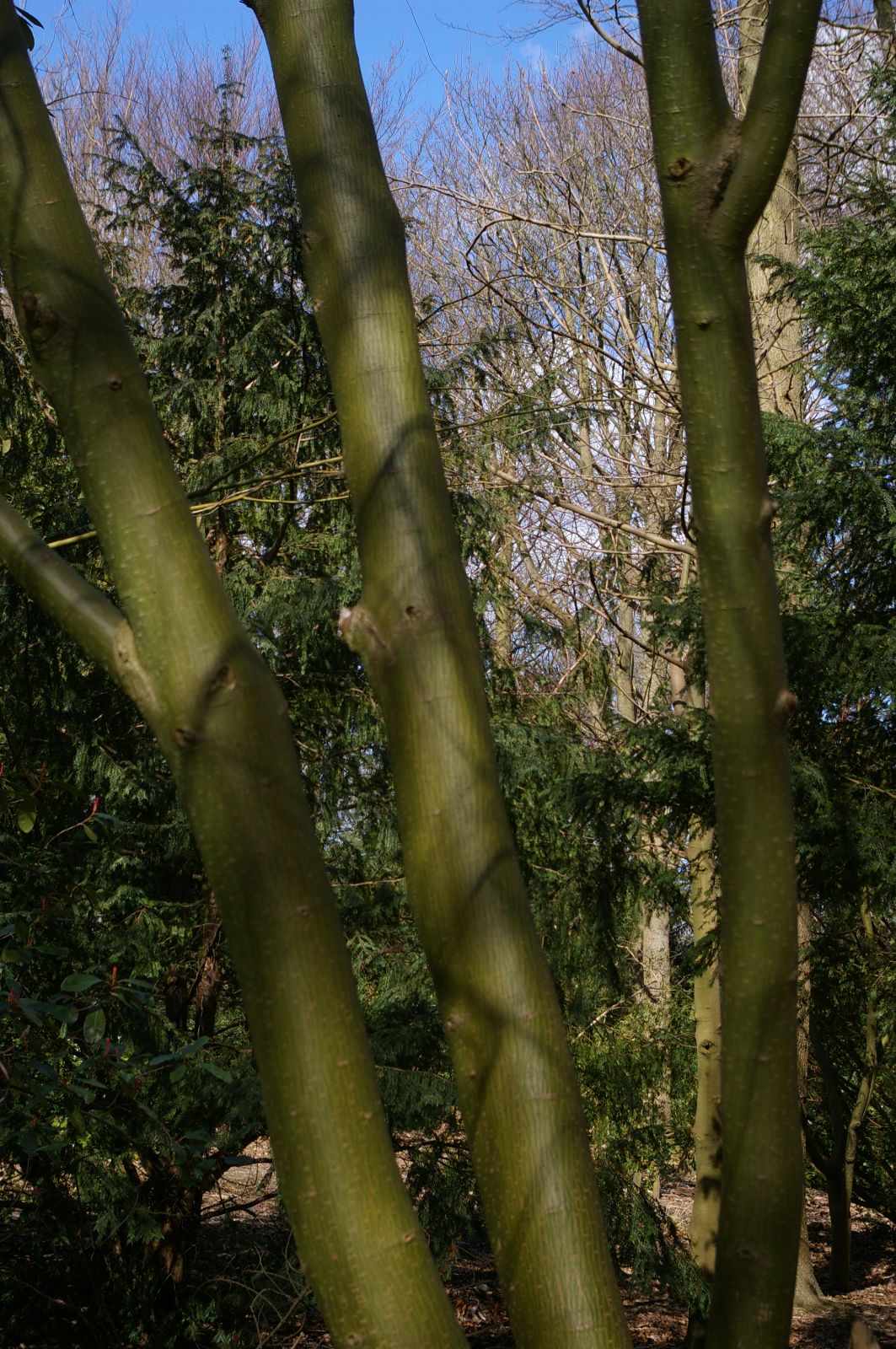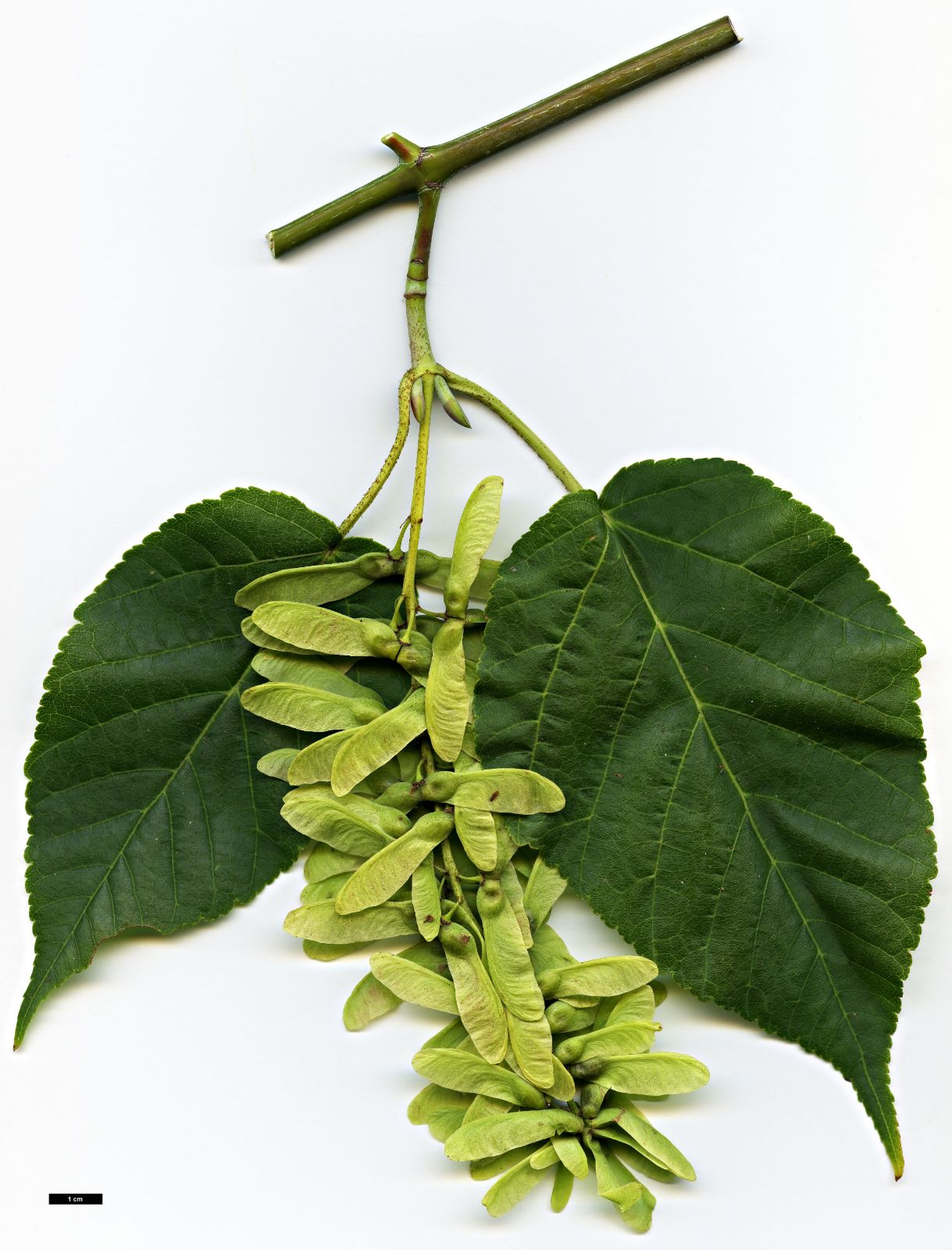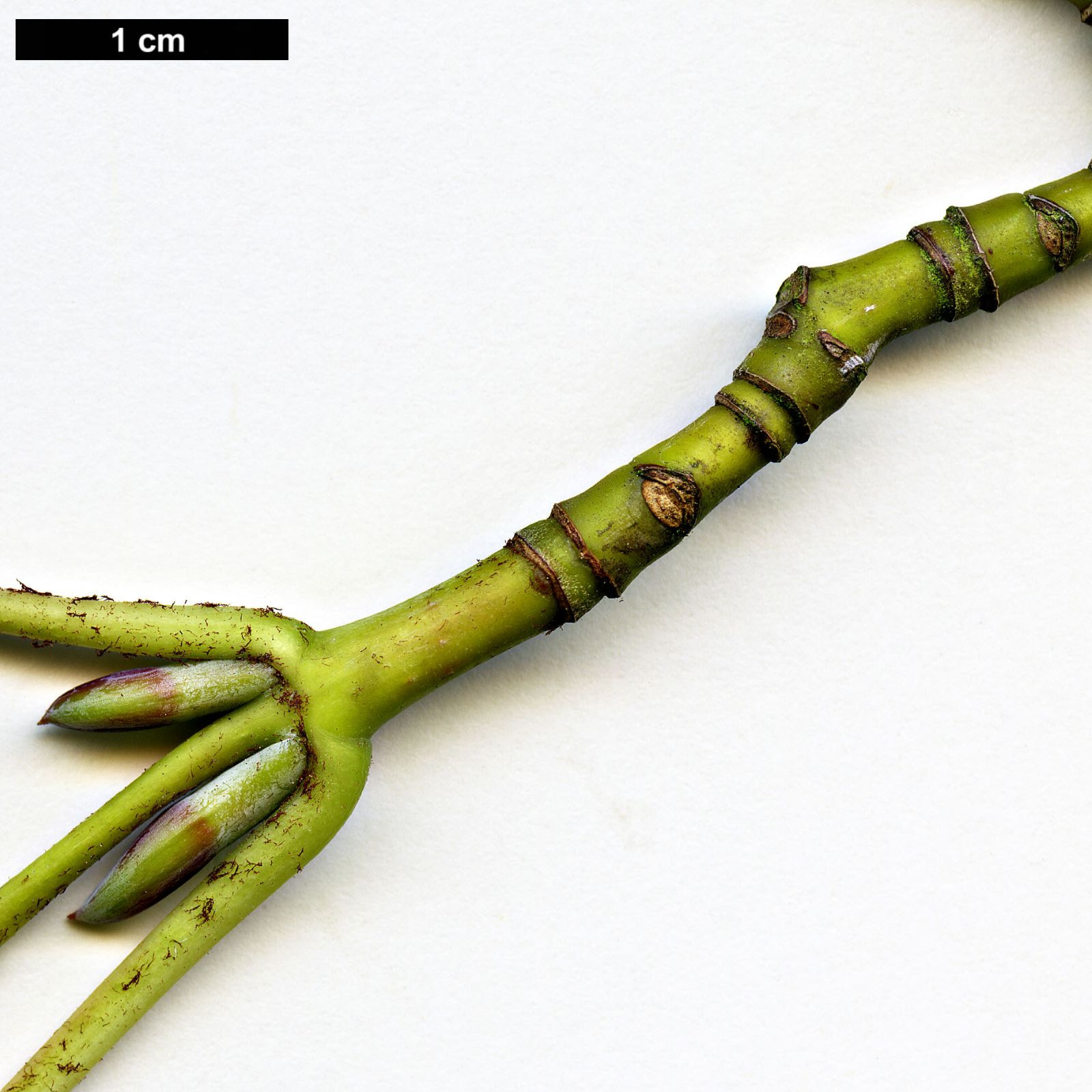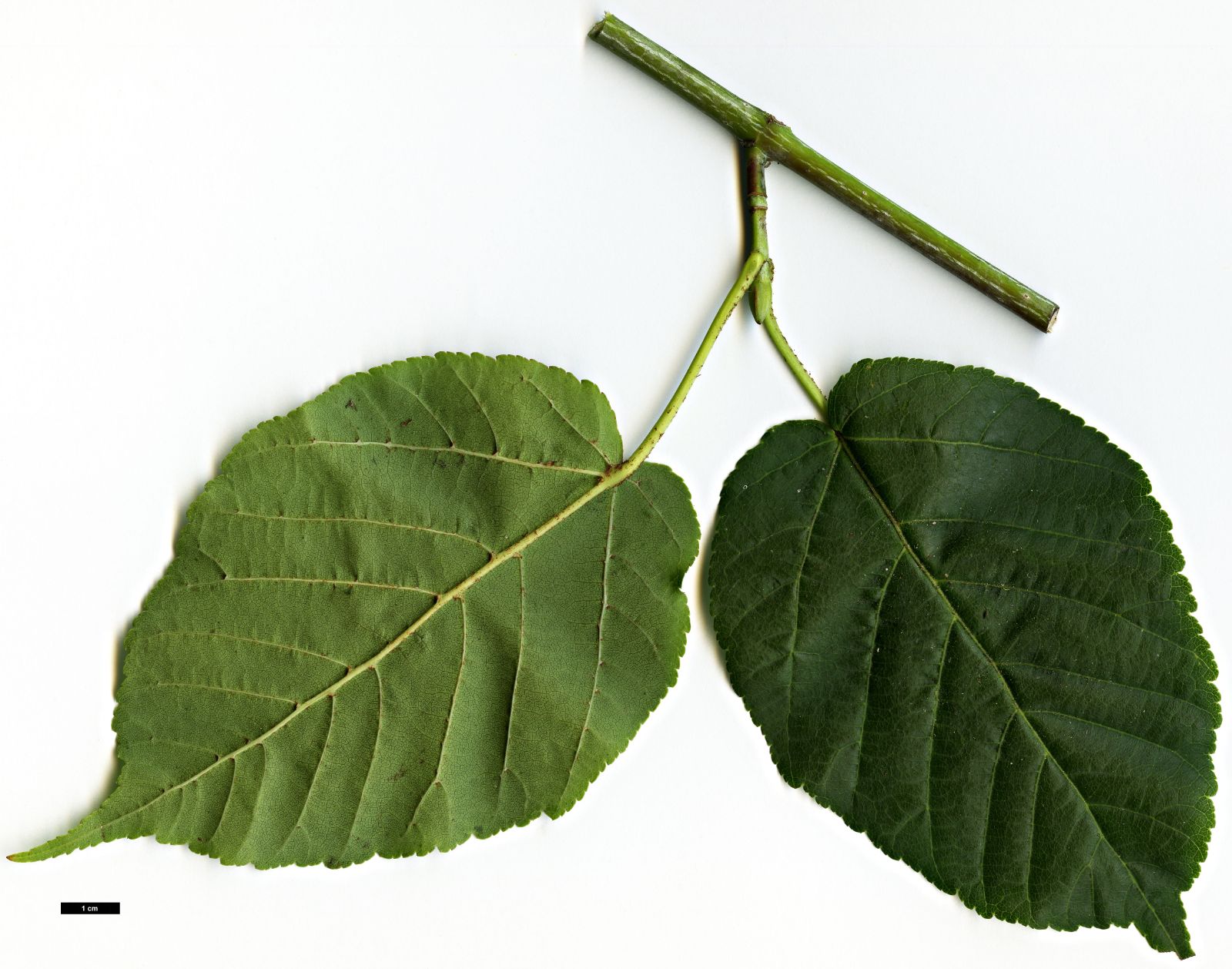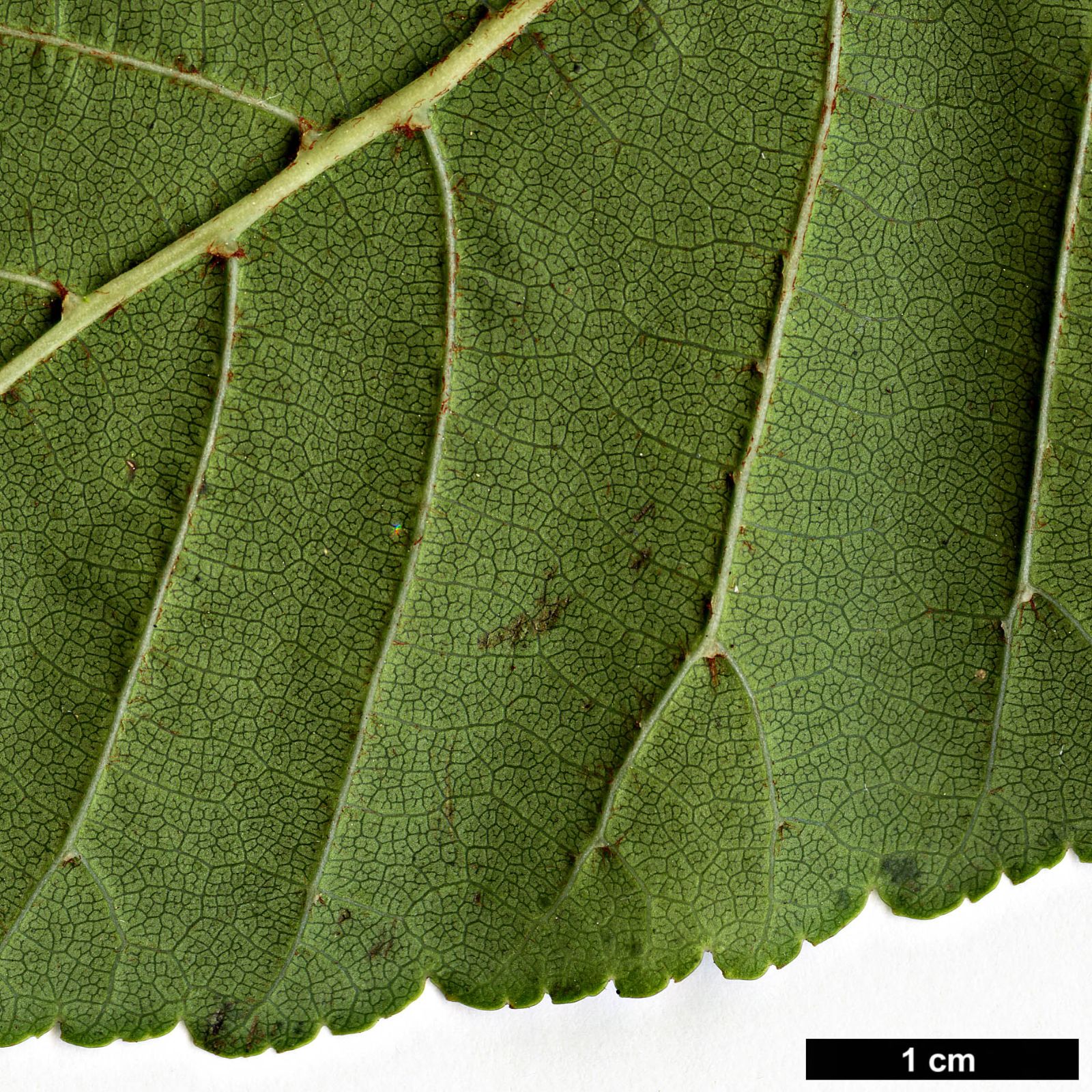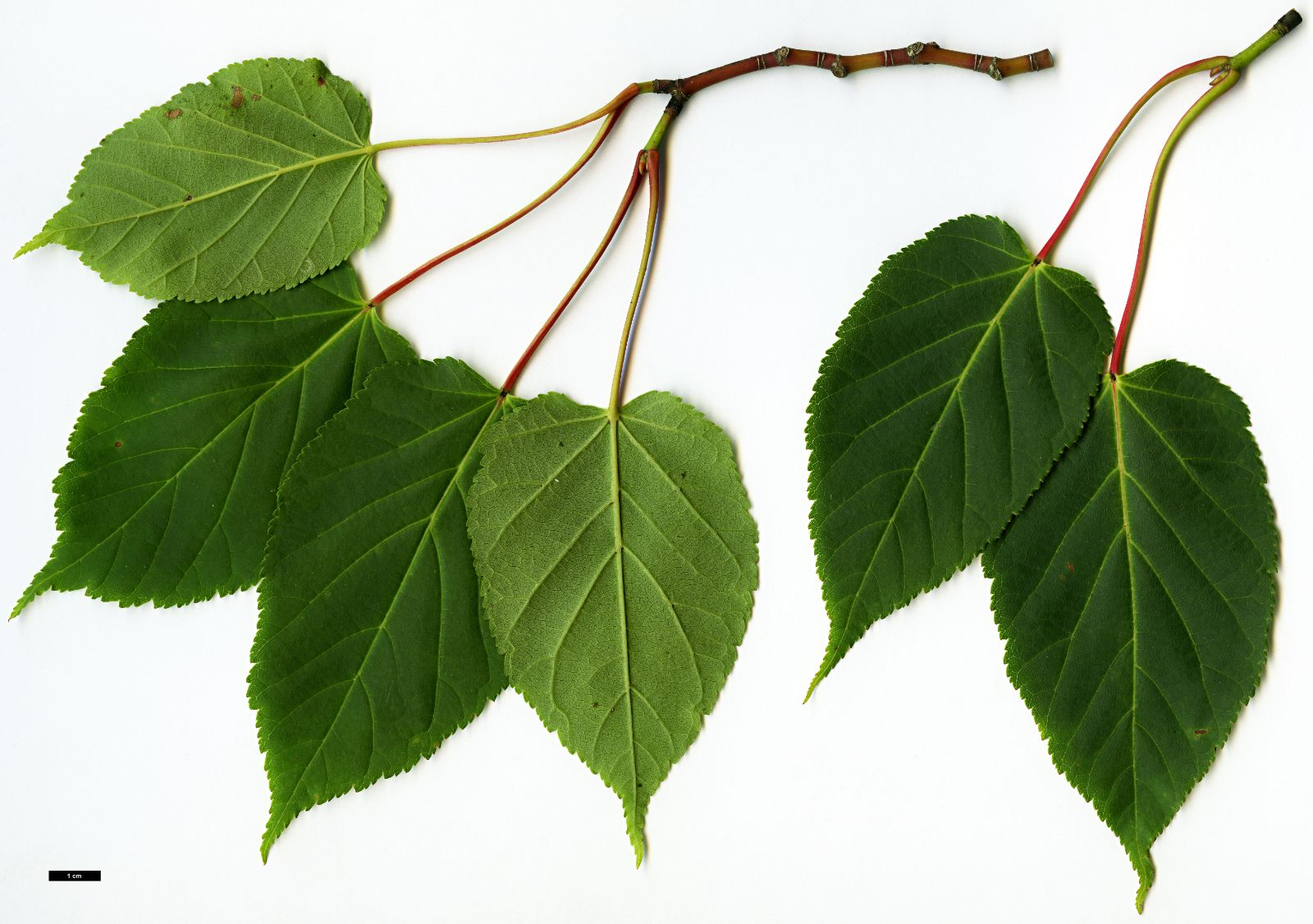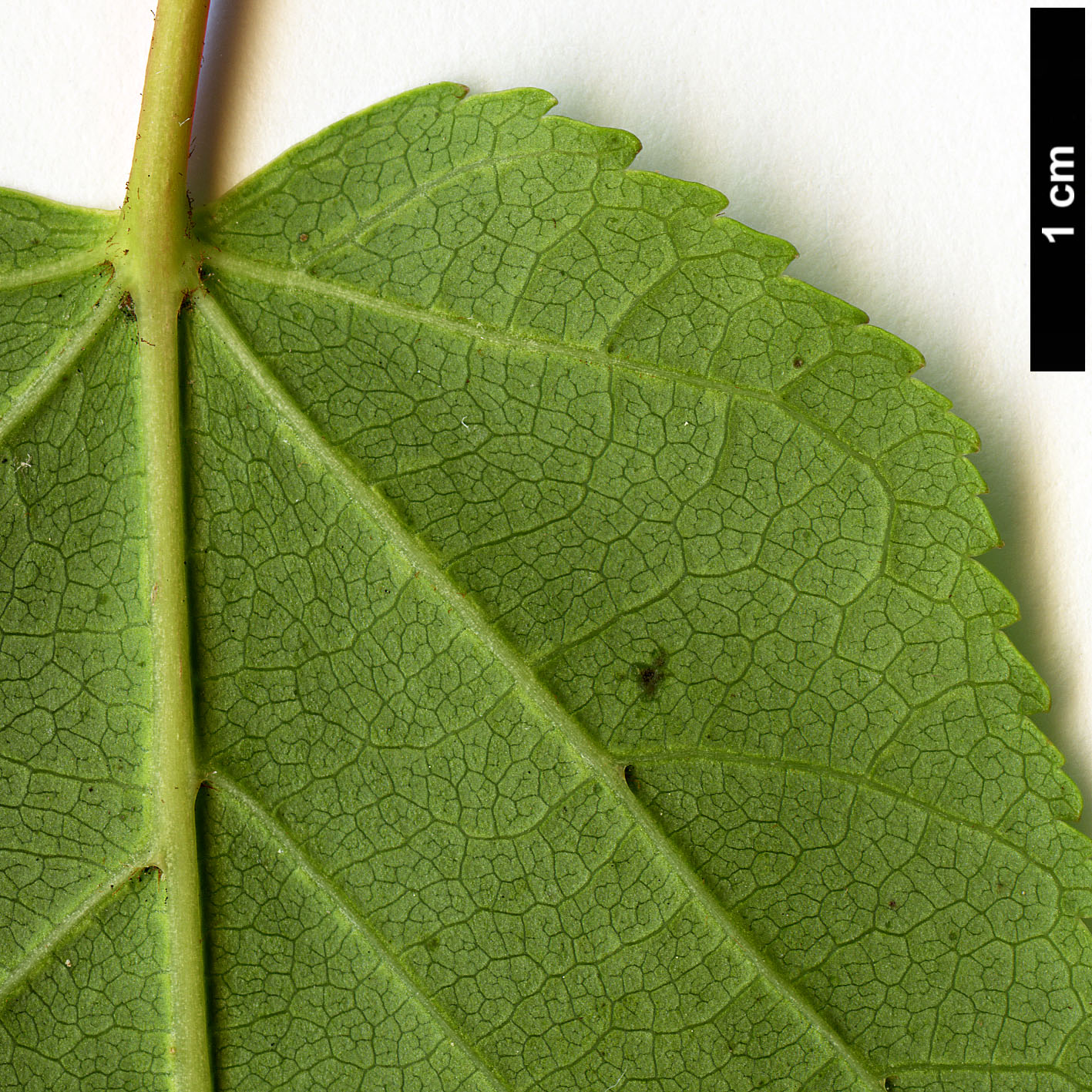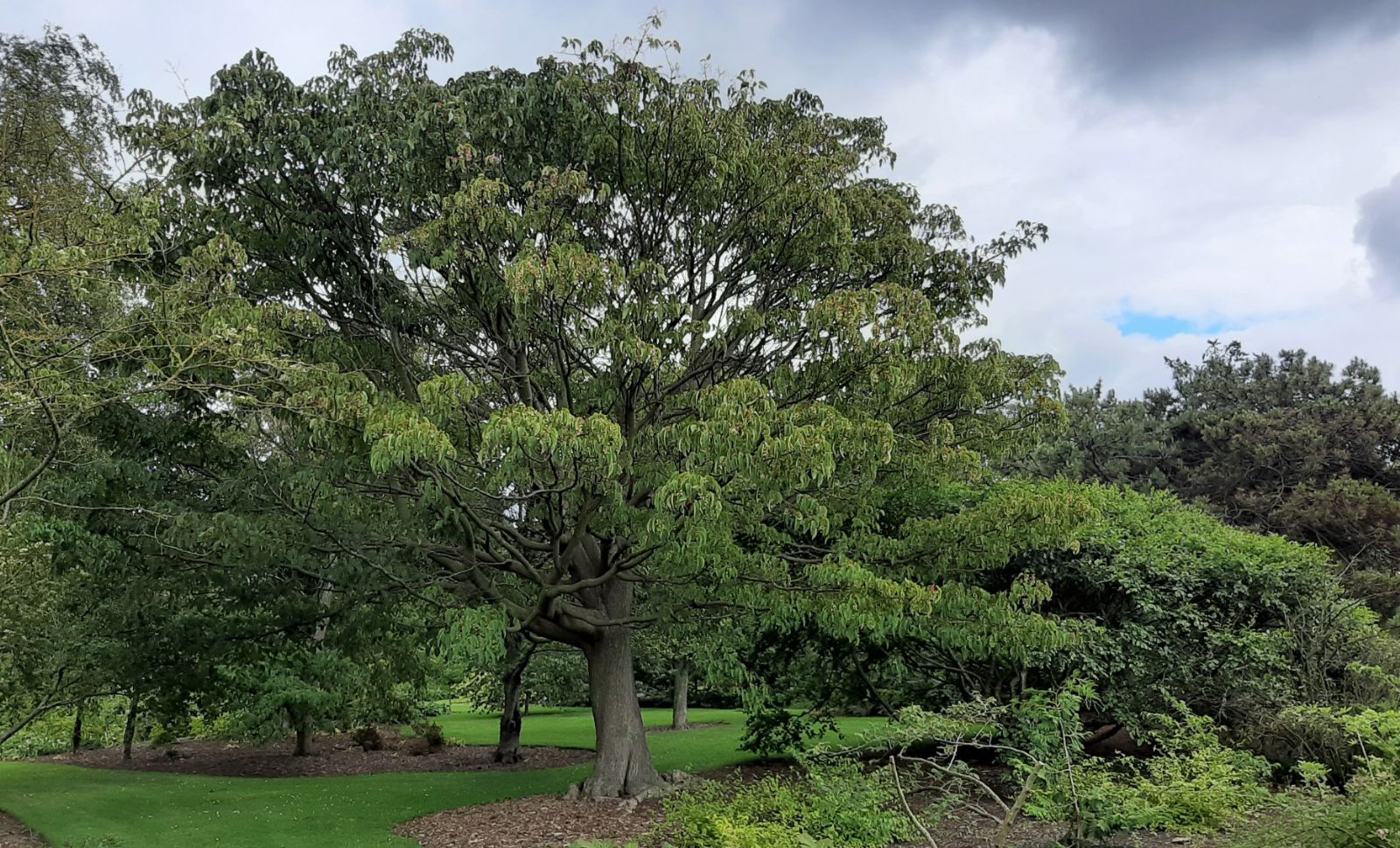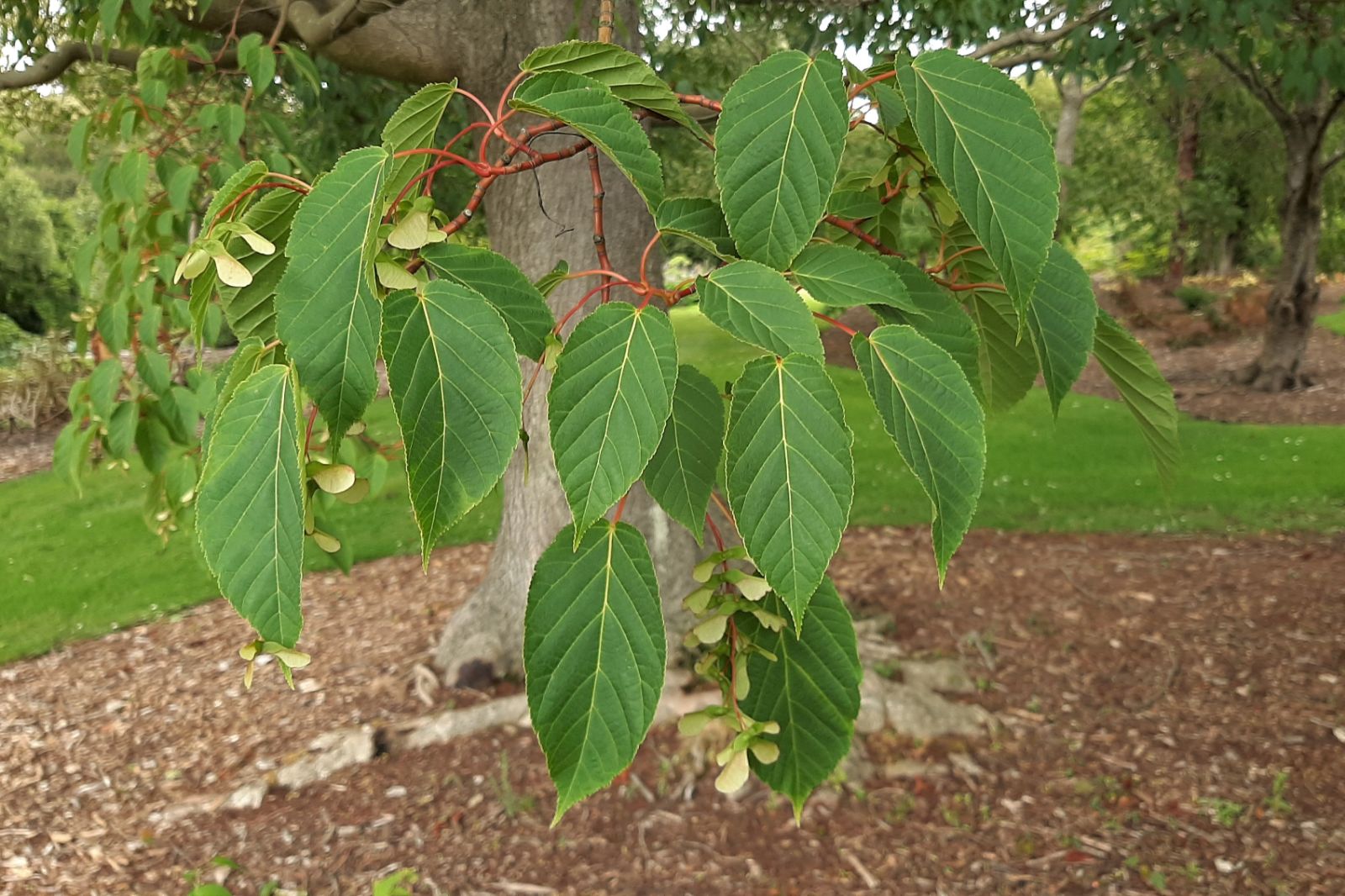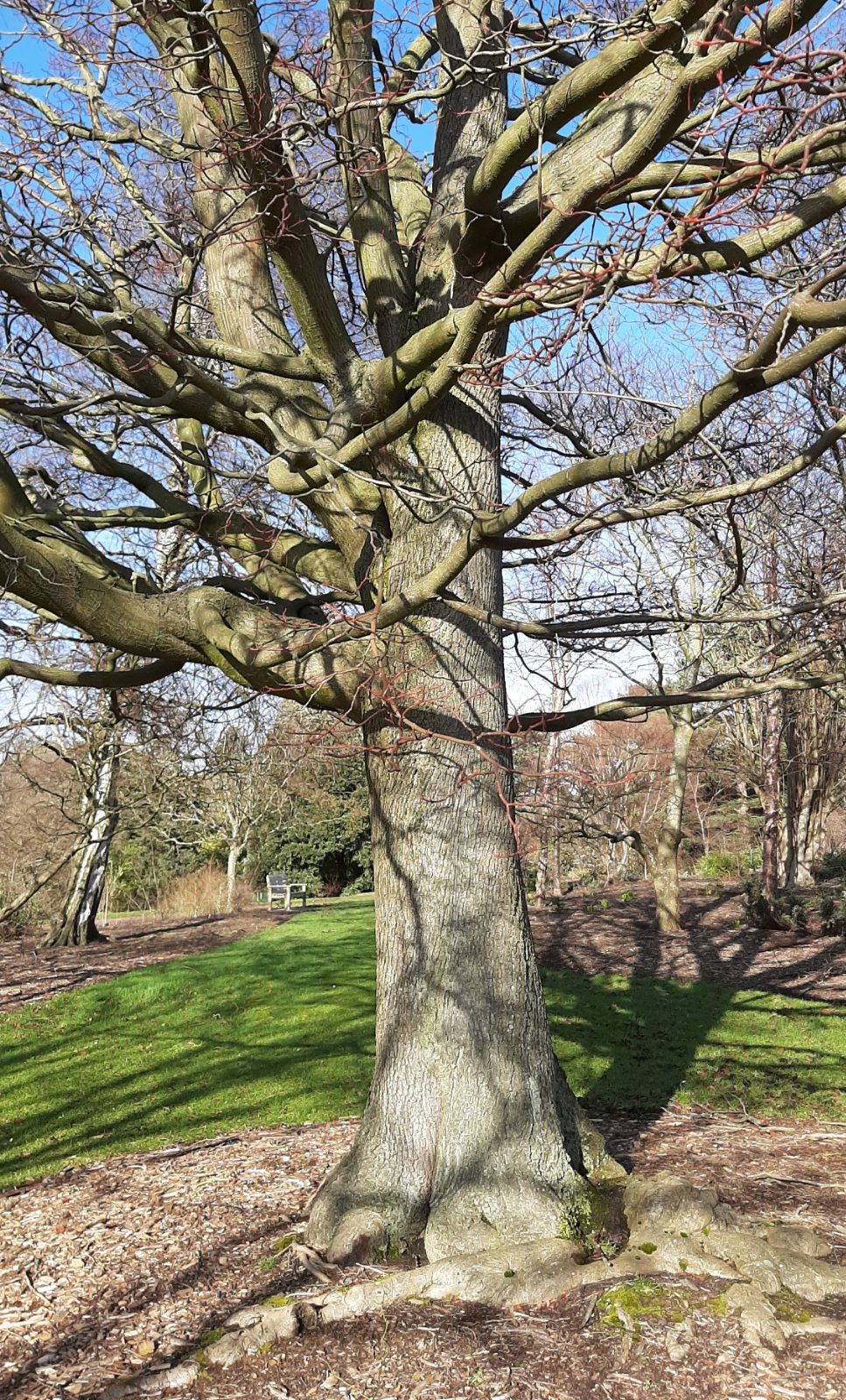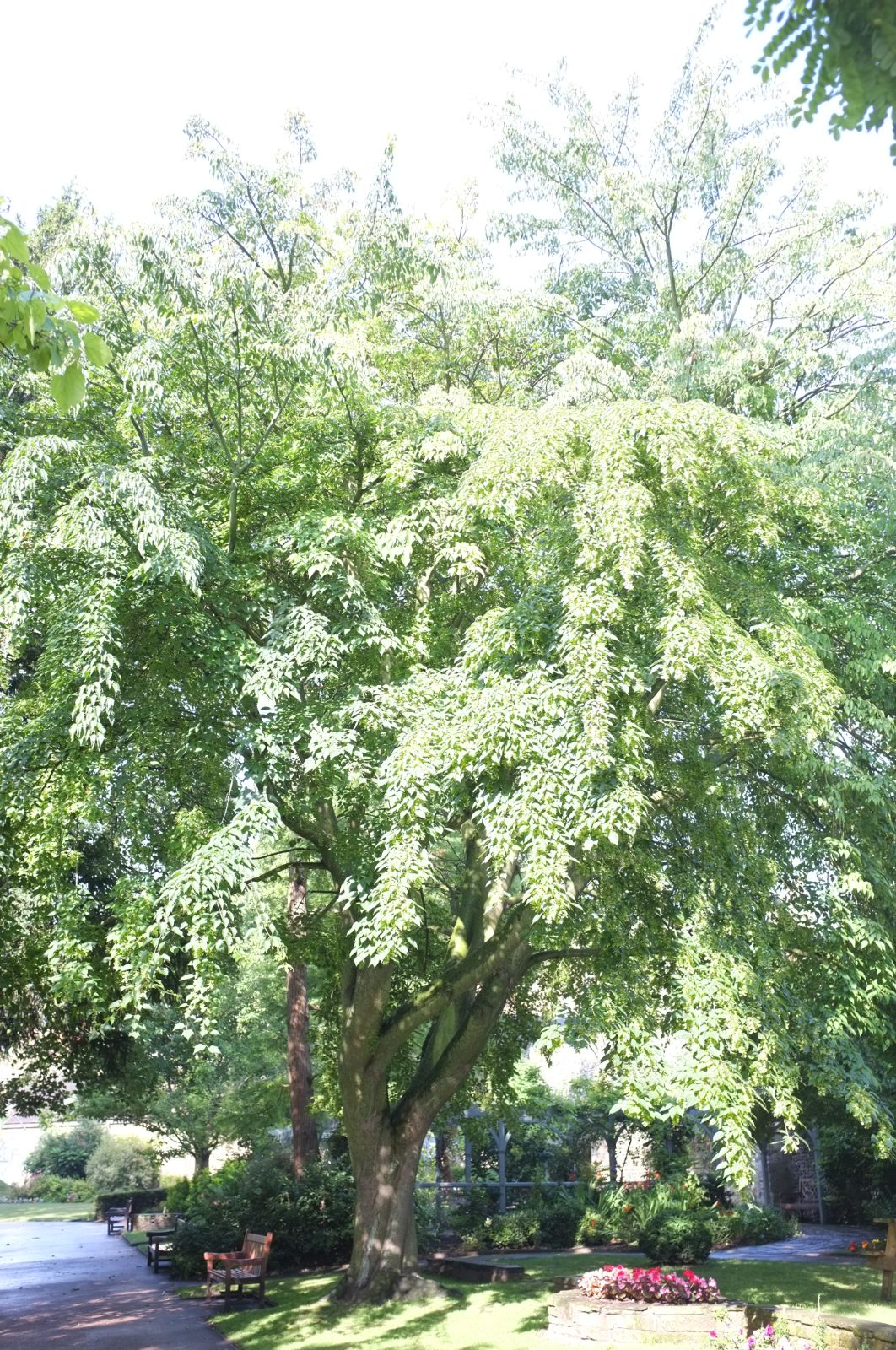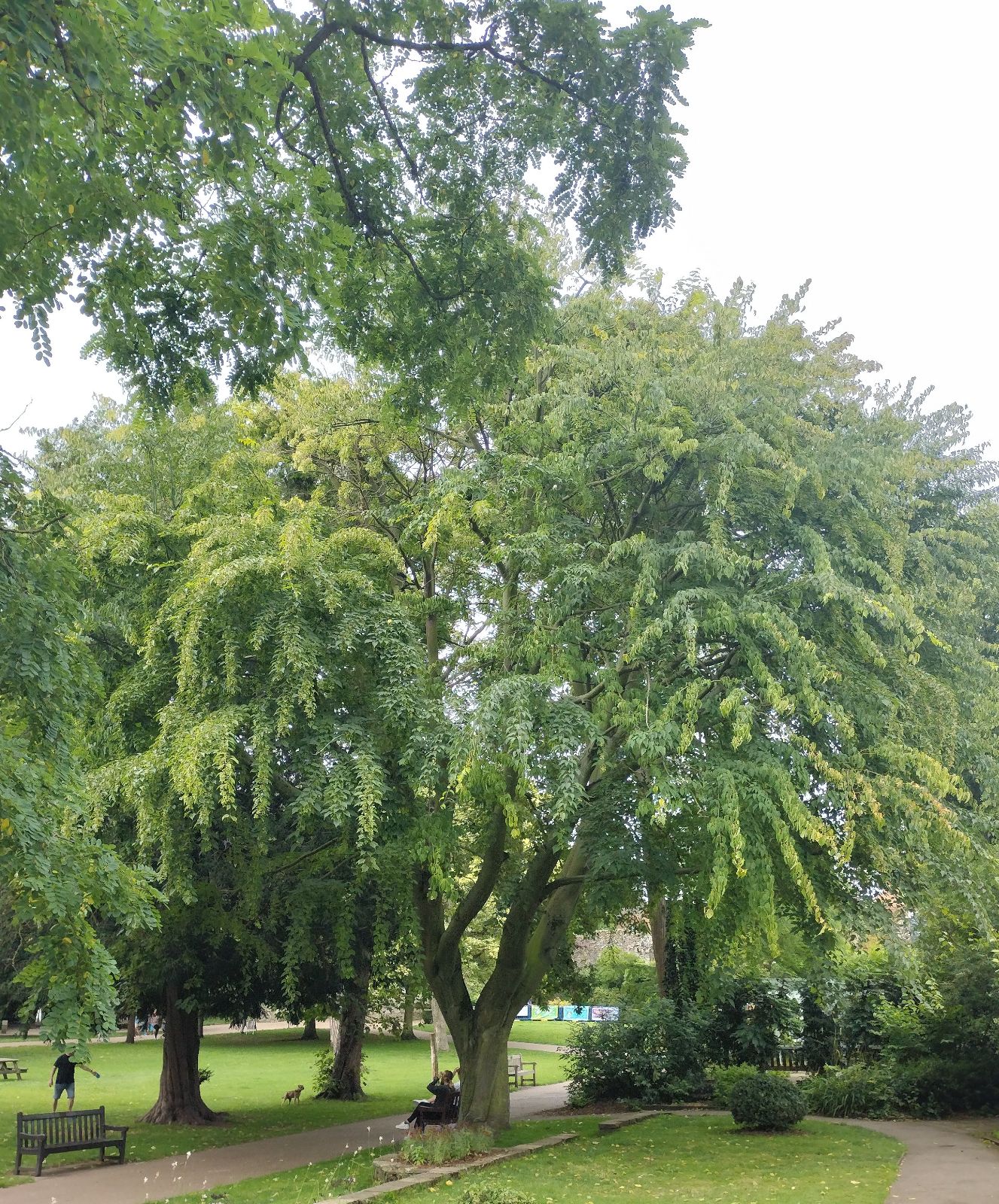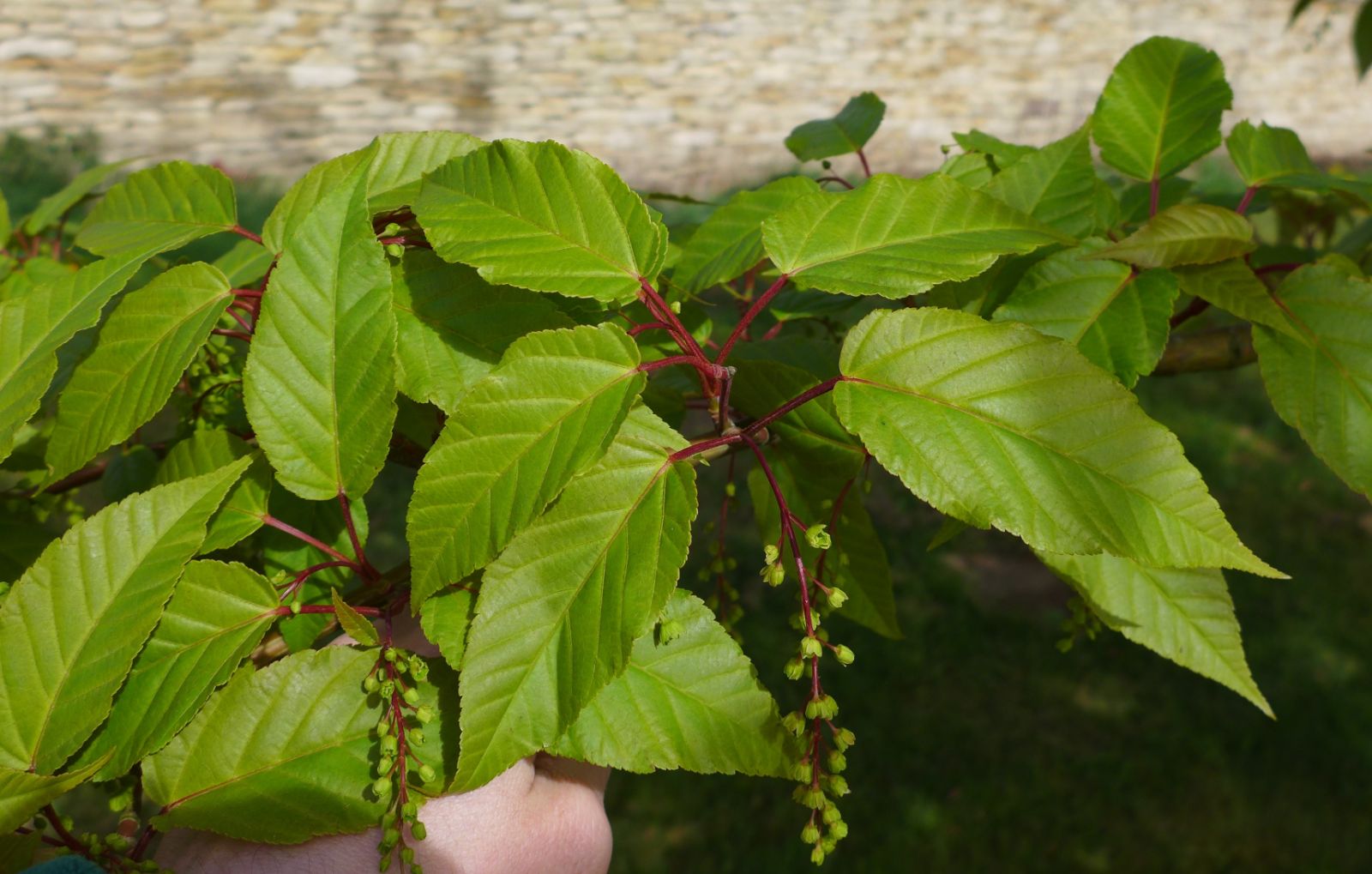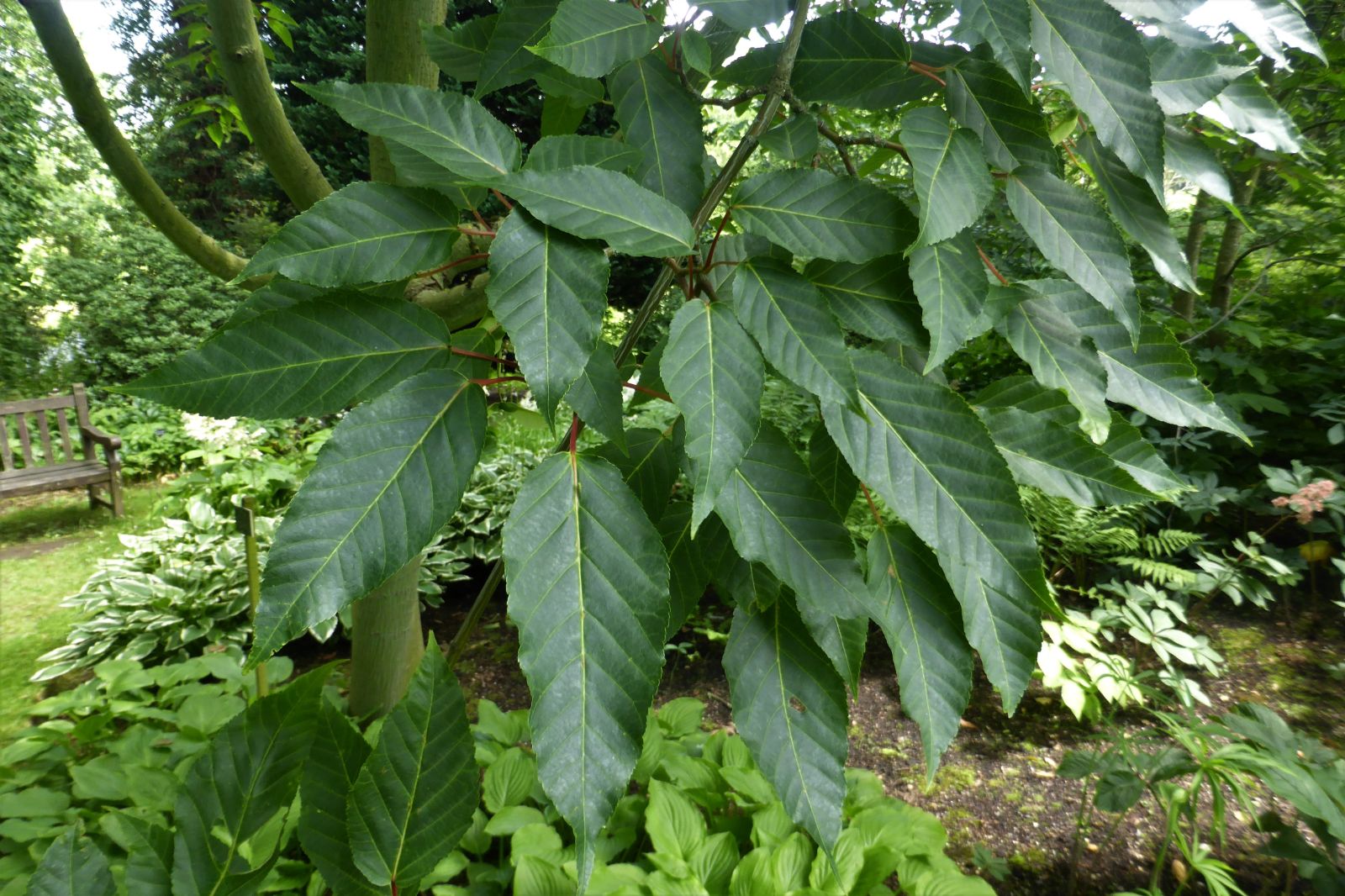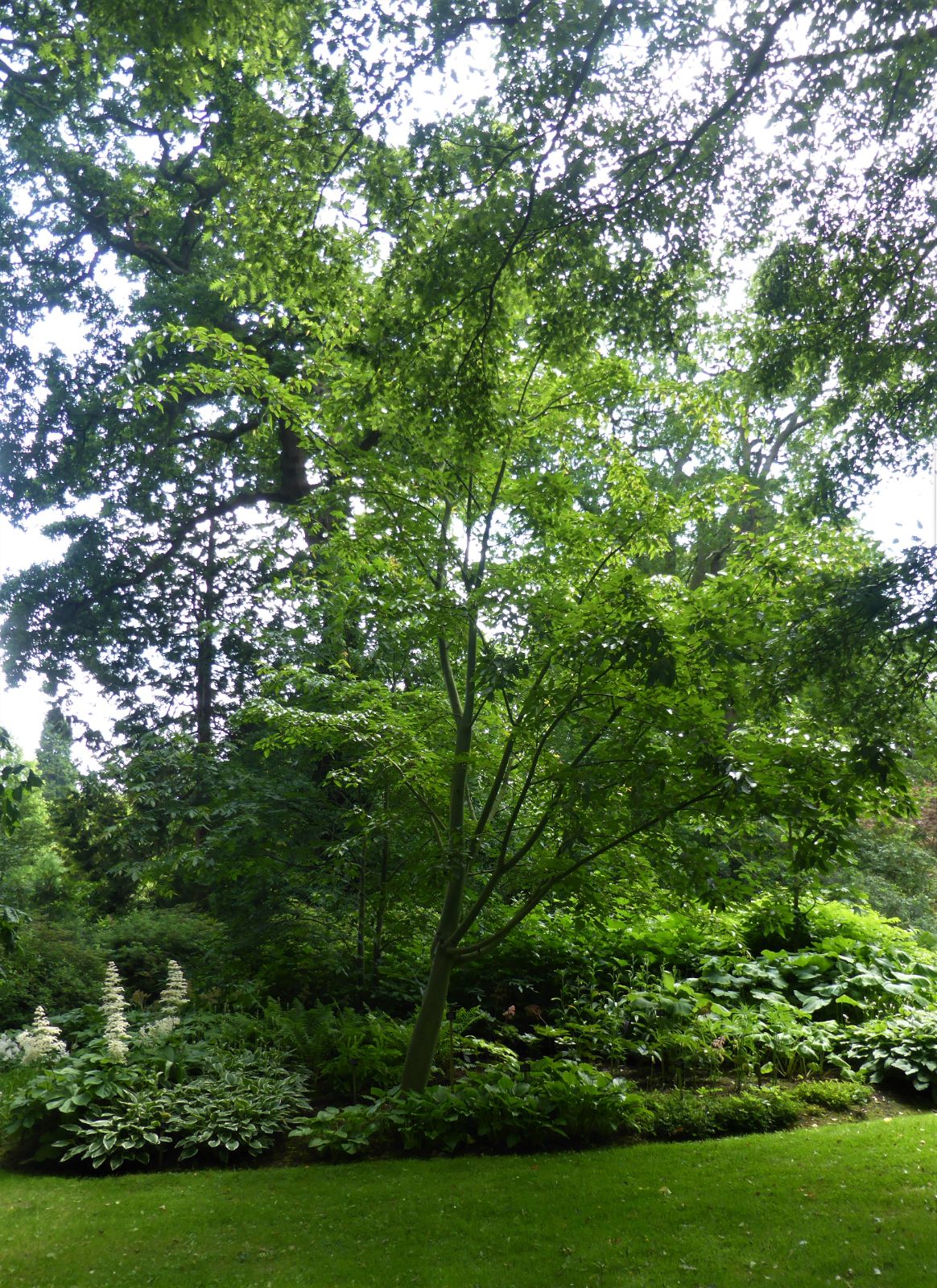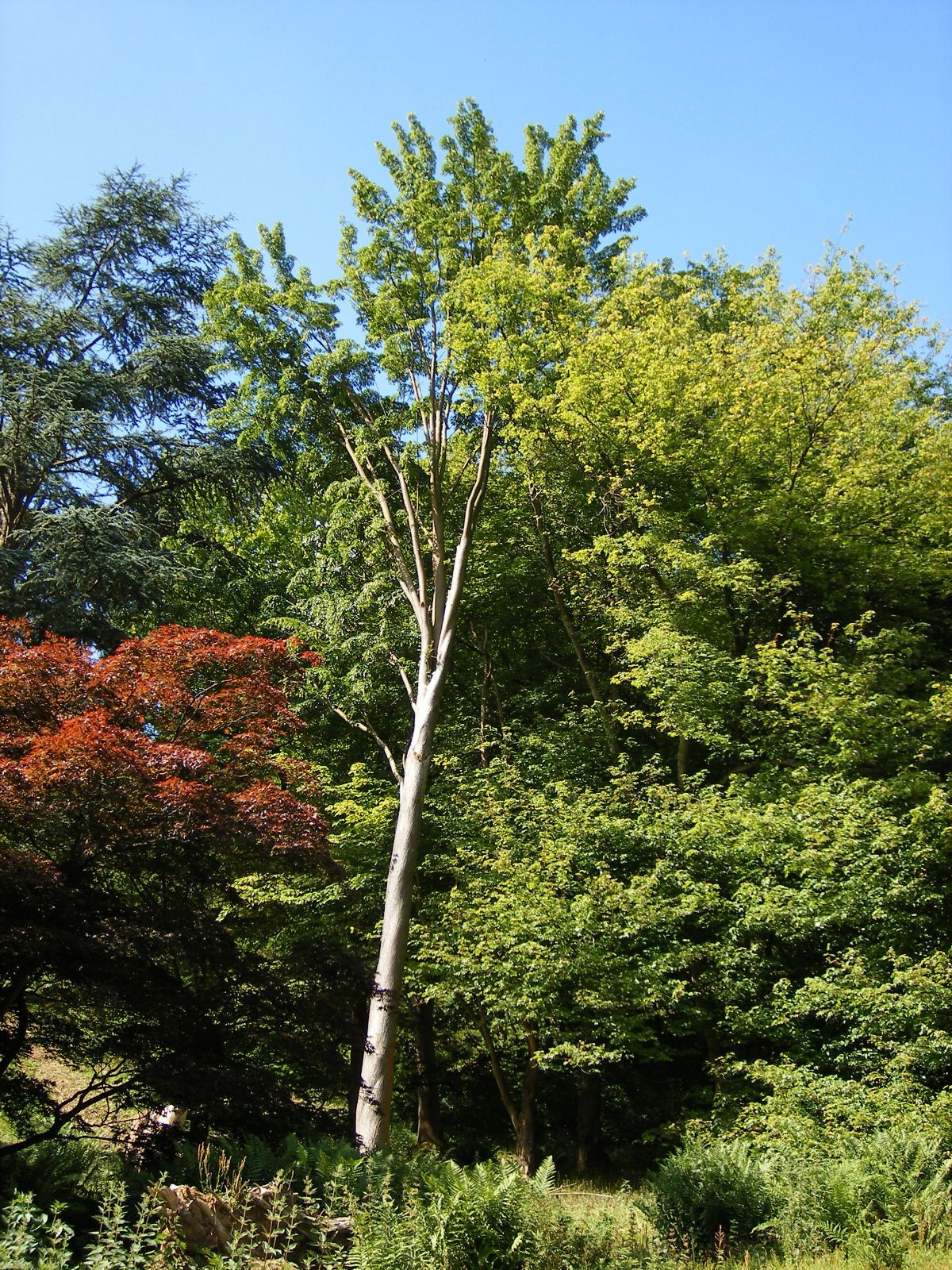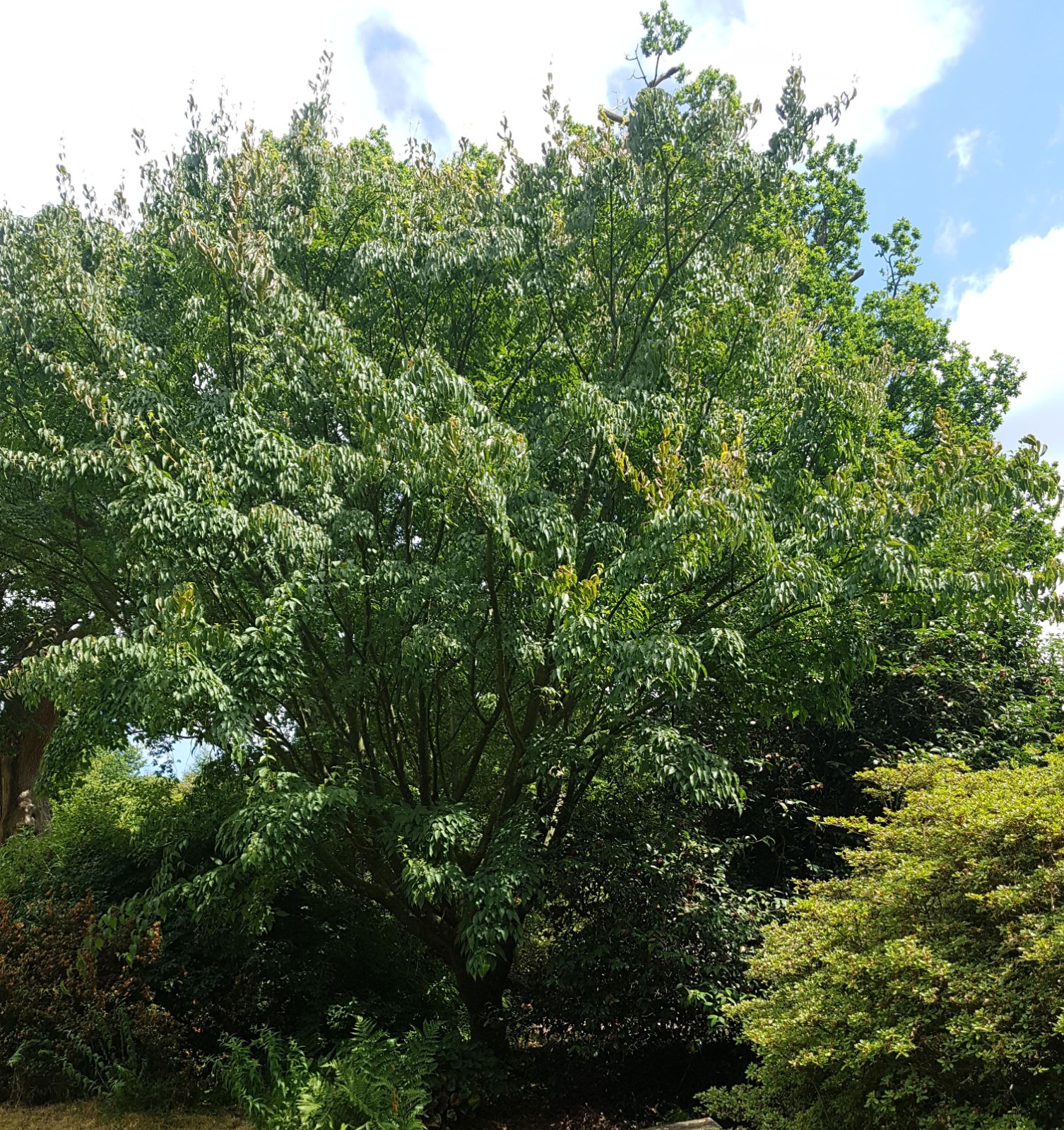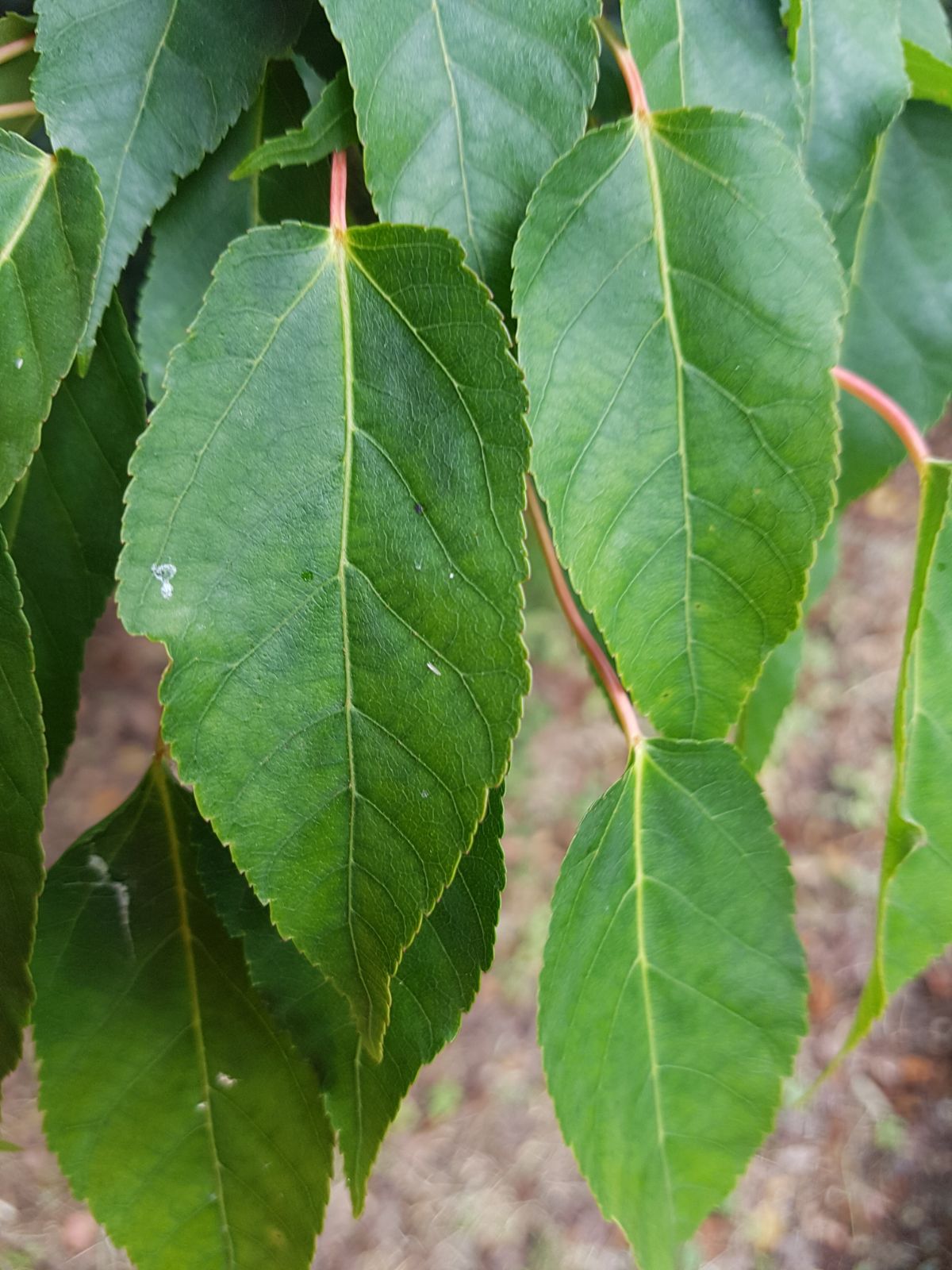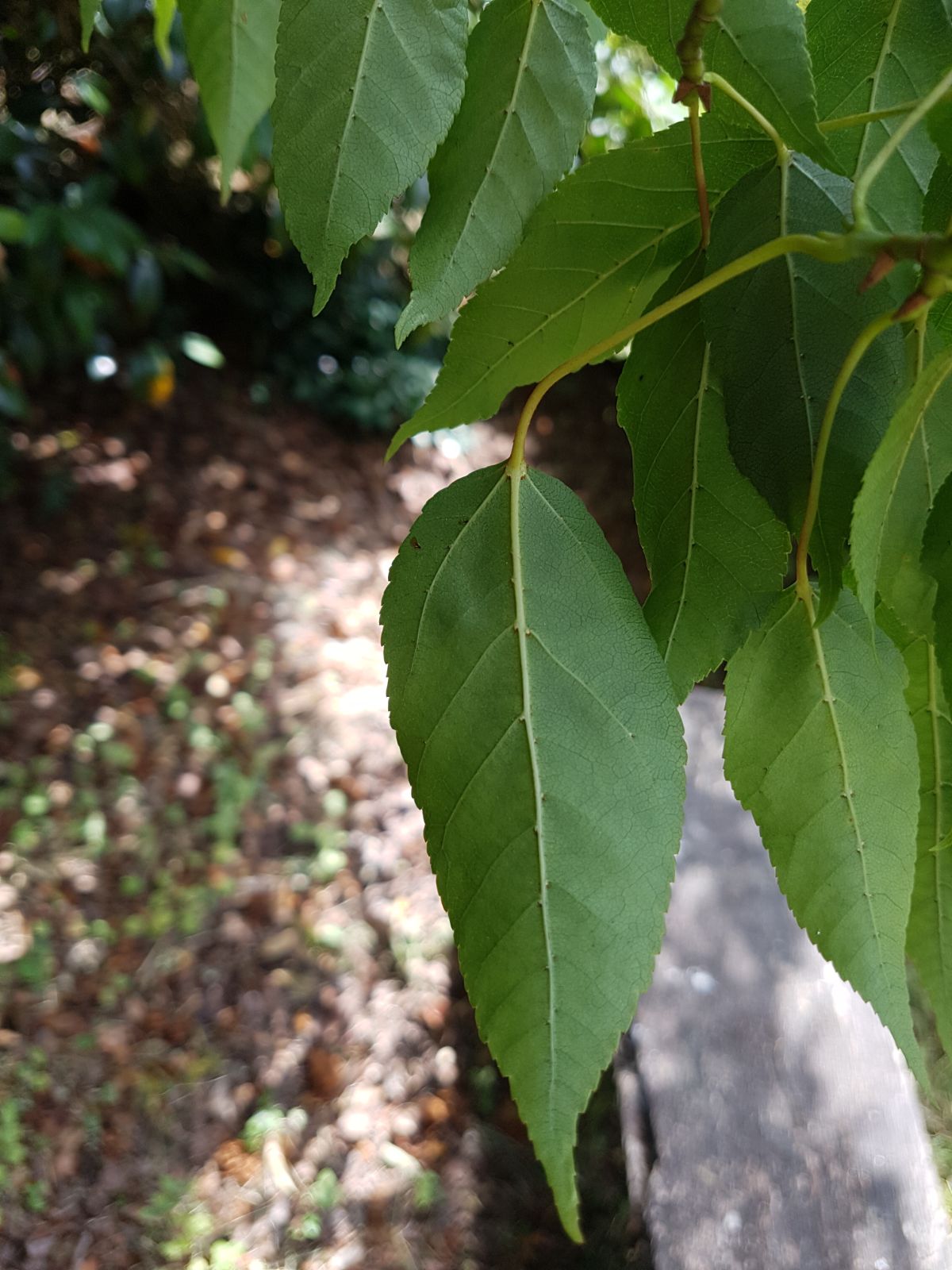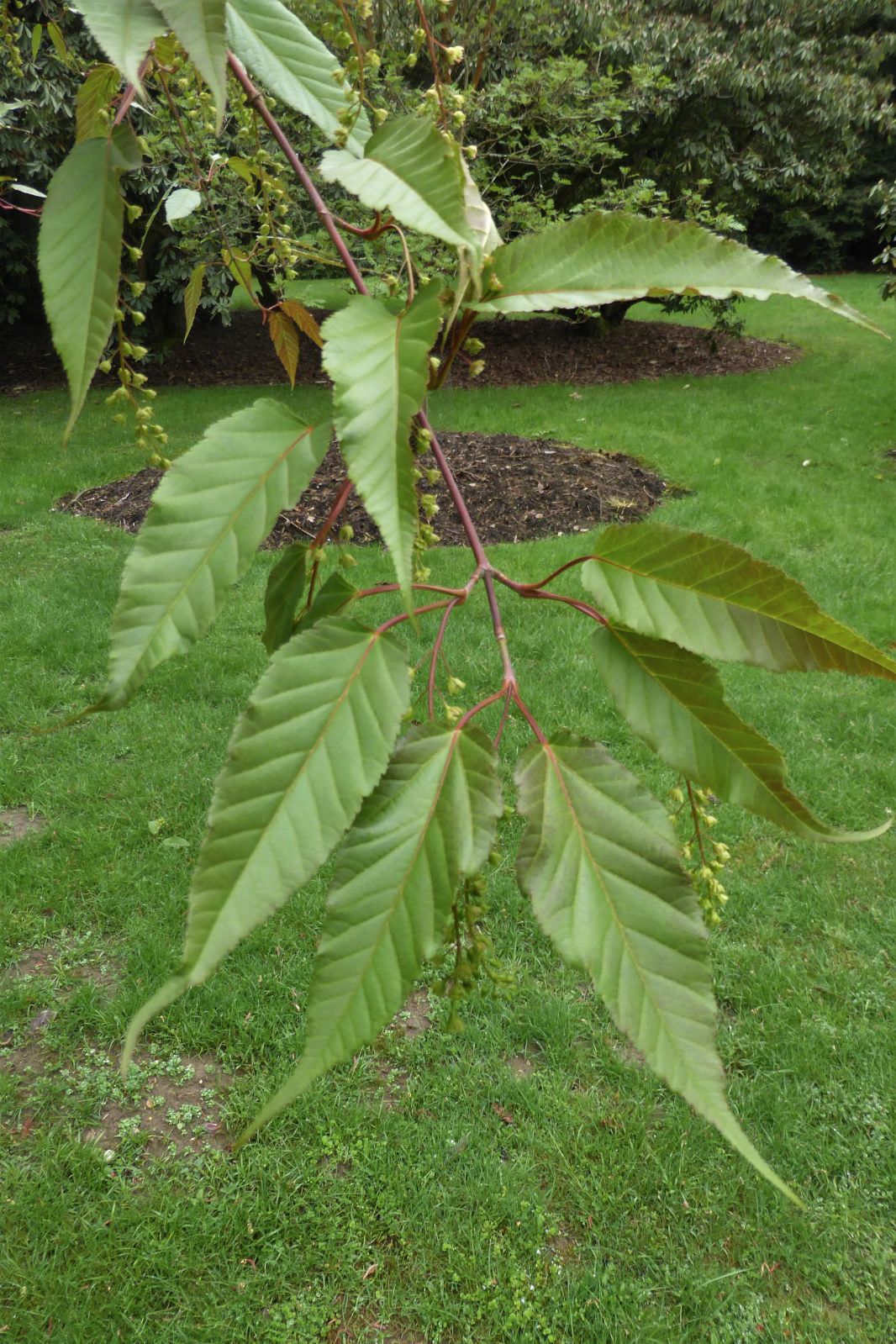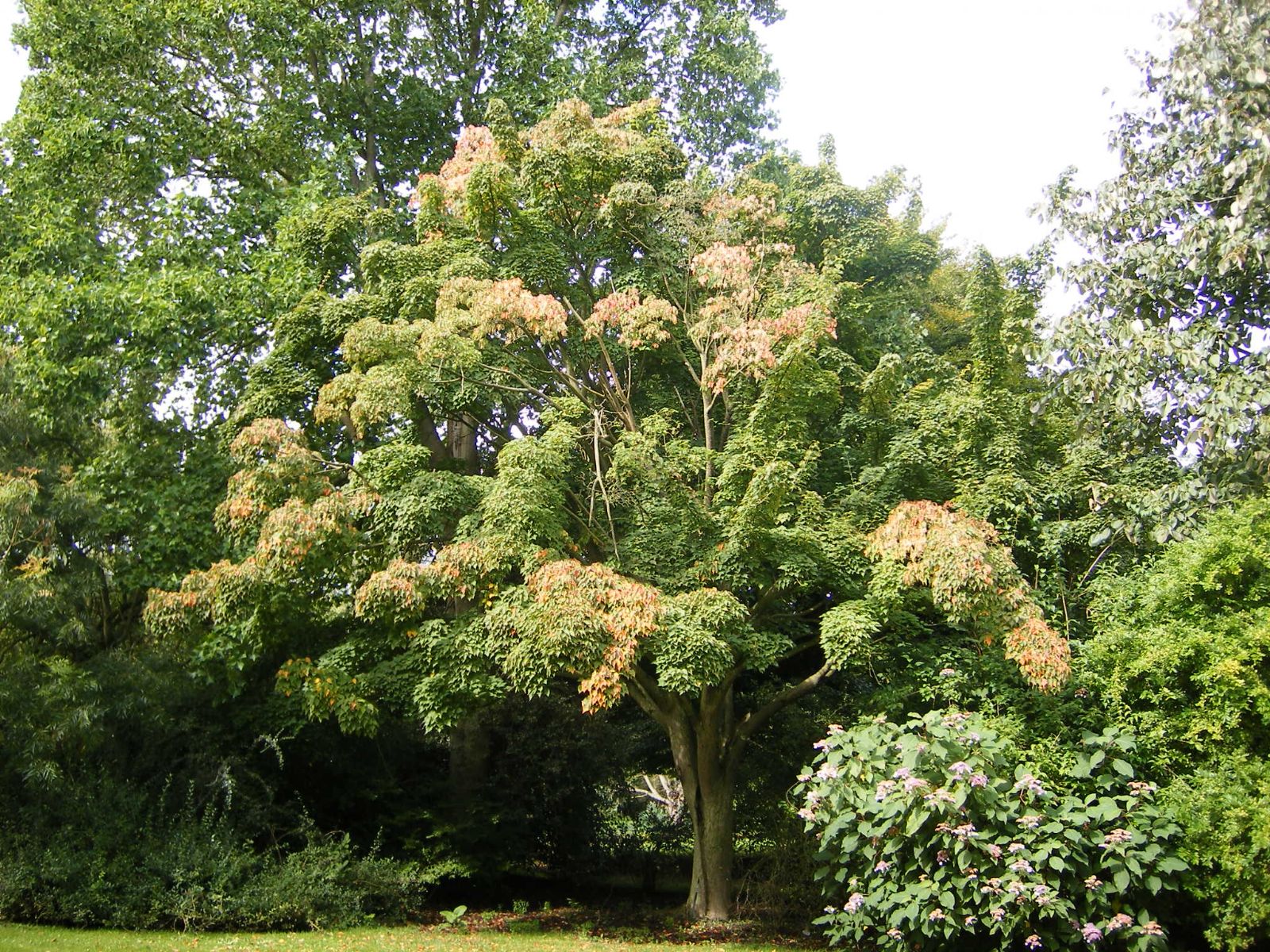Acer davidii
Sponsor
Kindly sponsored by
Lawrence Banks
Credits
Dan Crowley (2020)
Recommended citation
Crowley, D. (2020), 'Acer davidii' from the website Trees and Shrubs Online (treesandshrubsonline.
Genus
- Acer
- Sect. Macrantha
Synonyms
- Acer cavaleriei H. Léveillé
- Acer davidii var. acuminatifolium W.P. Fang
- Acer davidii var. glabrescens Pax
- Acer davidii var. grandifolium S.Y. Liang & Y.Q. Huang
- Acer davidii var. tomentellum Schwer.
- Acer davidii var. zhanganense S.Z. He & Y.K. Li
- Acer laxiflorum Pax var. integrifolium W.P. Fang
- Acer rubronervium Y.K. Li
- Acer sikkimense Miquel subsp. davidii (Franchet) Wesmael
- Acer veitchii Schwer. [as 'Ernest Wilson']
Infraspecifics
Other taxa in genus
- Acer acuminatum
- Acer amplum
- Acer argutum
- Acer barbinerve
- Acer buergerianum
- Acer caesium
- Acer calcaratum
- Acer campbellii
- Acer campestre
- Acer 'Candy Stripe'
- Acer capillipes
- Acer cappadocicum
- Acer carpinifolium
- Acer 'Cascade'
- Acer caudatum
- Acer ceriferum
- Acer chapaense
- Acer chienii
- Acer circinatum
- Acer cissifolium
- Acer × conspicuum
- Acer cordatum
- Acer coriaceifolium
- Acer × coriaceum
- Acer crataegifolium
- Acer diabolicum
- Acer distylum
- Acer divergens
- Acer duplicatoserratum
- Acer elegantulum
- Acer erianthum
- Acer 'Esk Flamingo'
- Acer fargesii
- Acer fenzelianum
- Acer flabellatum
- Acer forrestii
- Acer franchetii
- Acer × freemanii
- Acer fulvescens
- Acer 'Gimborn'
- Acer ginnala
- Acer glabrum
- Acer 'Gold Coin'
- Acer granatense
- Acer grandidentatum
- Acer griseum
- Acer heldreichii
- Acer henryi
- Acer × hillieri
- Acer hookeri
- Acer hyrcanum
- Acer japonicum
- Acer kawakamii
- Acer komarovii
- Acer laevigatum
- Acer laurinum
- Acer laxiflorum
- Acer lobelii
- Acer longipes
- Acer macrophyllum
- Acer mandshuricum
- Acer maximowiczianum
- Acer maximowiczii
- Acer metcalfii
- Acer miaotaiense
- Acer micranthum
- Acer 'Mindavi'
- Acer 'Minorient'
- Acer miyabei
- Acer miyabei × campestre
- Acer monspessulanum
- Acer morifolium
- Acer 'Mozart'
- Acer oblongum
- Acer obtusifolium
- Acer okamotoanum
- Acer oliverianum
- Acer opalus
- Acer orientale
- Acer palmatum
- Acer papilio
- Acer pauciflorum
- Acer pectinatum
- Acer pensylvanicum
- Acer pentaphyllum
- Acer pentapotamicum
- Acer pictum
- Acer pilosum
- Acer pinnatinervium
- Acer platanoides
- Acer platanoides × amplum
- Acer platanoides × truncatum
- Acer × pseudoheldreichii
- Acer pseudoplatanus
- Acer pseudosieboldianum
- Acer pubinerve
- Acer pycnanthum
- Acer rubescens
- Acer rubrum
- Acer rufinerve
- Acer saccharinum
- Acer saccharum
- Acer sempervirens
- Acer 'Serpentine'
- Acer serrulatum
- Acer shenkanense
- Acer sieboldianum
- Acer sikkimense
- Acer 'Silver Cardinal'
- Acer 'Silver Ghost'
- Acer sinense
- Acer sinopurpurascens
- Acer spicatum
- Acer stachyophyllum
- Acer taronense
- Acer tataricum
- Acer tegmentosum
- Acer tenellum
- Acer tetramerum
- Acer tibetense
- Acer tonkinense
- Acer triflorum
- Acer truncatum
- Acer tschonoskii
- Acer turkestanicum
- Acer tutcheri
- Acer ukurunduense
- Acer velutinum
- Acer wardii
- Acer 'White Tigress'
- Acer wilsonii
- Acer × zoeschense
A deciduous tree to 17 m. Bark dark green with pale stripes, turning brown with age. Branchlets glabrous, purplish-red or greenish, striped white. Buds stipitate, oblong, with 2 pairs of valvate scales. Leaves ovate, base subcordate to rounded, undivided or shallowly 3– (rarely 5–) lobed, (6–) 8–12 (–14) × (4–) 5–8 (–9) cm, lobes apically obtuse or acute, apex acuminate to caudate-acuminate, margins irregularly serrulate or double-serrate, upper surface dark green, lower surface rusty pubescent at first, later glabrous; petiole 3–6 cm long, red to green, often grooved, pubescent or not; autumn colours yellow to red. Inflorescence axillary or terminal, racemose, pendulous, 10–30 flowered. Flowers yellowish-green, 5-merous, usually dioecious, pedicels 1–1.5 cm long, sepals elliptic, ~0.4 cm long, petals obovate, ~0.4 cm long, stamens 8, inserted outside the nectar disc. Samaras 2.5–2.8 cm long, wings spreading obtusely to horizontally. Nutlets concave on one side. Flowering in April, with unfolding leaves, fruiting in October. (Xu et al. 2008; Rix 2013).
Distribution Myanmar China Anhui, Fujian, south eastern Gansu, Guangdong, Guangxi, Guizhou, Henan, Hubei, Jiangsu, Ningxia, southern Shaanxi, Sichuan, Yunnan, Zhejiang
Habitat Temperate mixed forests between 1000 and 3000 m asl.
USDA Hardiness Zone 6-7
RHS Hardiness Rating H5
Conservation status Least concern (LC)
One of the most common snake bark maples in cultivation, and one of the most variable, Acer davidii was described in 1886 from material collected in Baoxing, Sichuan by French botanist and missionary Père Armand David (Rix 2013). It had been introduced to cultivation before then, however, through Maries from Ichang, Hubei in 1879, while collecting for Veitch Nurseries. This small-leaved form from the northern part of the species range was also introduced by Wilson in 1907 (Sargent 1913), representing one of two common forms of the species in cultivation described by Bean (1976a), and now often grown as ‘Ernest Wilson’. The second form, from further south, in Yunnan, with larger leaves is often grown as ‘George Forrest’. Though usually described as cultivars, neither of these forms are clonal and they would be better treated as Groups. However, both are yet to be described as such.
Since Bean (1976a), a great many more successful introductions have been made, which have served to illustrate the variety within A. davidii. This is unsurprising, given this species has one of the largest ranges of any maple in China. Among these are numerous SICH introductions, from Sichuan, which are well represented particularly in British collections as well as at Quarryhill Botanical Garden and other gardens on the west coast of North America. Particularly distinctive is SICH 2228, collected in Kanding County, Sichuan Province (SICH 2228), with rounded leaves, as exhibited by plants at RBG Kew and Westonbirt. A young example from this collection has deep red new growth, though this character is somewhat variable among plants from the same collection, as is also the case with plants of Compton, d’Arcy & Rix 2117, collected north of Lijiang, Yunnan Province (Rix 2013). Plants of another SICH collection from Kanding County, SICH 720 has large leaves, recalling the form grown as ‘George Forrest’. Vigorous shoots can bear three-lobed leaves and all available material should be examined to distinguish between the typical subspecies and subsp. grosseri. This too has variable characters and older branches can produce unlobed leaves (Xu et al. 2008).
Interestingly, while leaf shape and, in some cases, lobing can be somewhat variable within the species, its bark tends to be quite consistent, remaining smooth and green, even with age. However, a plant of GUIZ 219 at the David C. Lam Asian Garden at the University of British Columbia shows fissuring not usually associated with the species. A fine plant of SABE 0517 of similar stature close by has typical bark, the two providing a useful study tool (D. Justice, pers. comms. 2019). As stated by Clarke (1988), LANC 962 also fits A. davidii, rather than A. metcalfii. See the account of that species for further details of plants grown under that number.
Herbarium material at Kew and RBG Edinburgh from recent Vietnamese collections appears, in maturity, to belong to the A. davidii affinity. However, plants circulated from these collections, made by RBGE and partners in 2014, appear quite different from this species in juvenility. They have large, distinctly three- or five-lobed leaves, with deep red colouration in spring. Leaf size and lobing both decrease with age, though the foliar differences between parent and offspring are most extreme at this point.
Plants of A. davidii can be single or multistemmed and are relatively unfussy in cultivation. Favouring partial shade in a sheltered location, the species will withstand exposure to full sun. In the wild, it often grows along rivers where its growth is less impacted by larger trees (Rix 2013). van Gelderen et al. (1994) state that it has potential as a street tree, though it is rarely used as such. The species is easily grown from seed, though when collected from specimens grown in proximity to other members of section Macrantha, hybrids are to be expected.
'Canton'
Synonyms / alternative names
Acer davidii 'Cantonspark'
RHS Hardiness Rating: H5
‘Canton’ is a Dutch cultivar, selected from a tree originally attributed to Acer davidii subsp. grosseri in the Cantonspark in Baarn, the Netherlands, though later recognised as belonging to the typical subspecies. It makes a multistemmed, fastigiate tree, growing up to 15 m tall, with smaller leaves than many other A. davidii selections. Although it has been suggested as a useful subject for narrow streets its use in such settings appears to be limited, at best ( van Gelderen et al. 1994; van Gelderen and van Gelderen 1999).
'Chinese Temple'
RHS Hardiness Rating: H5
Described as ‘probably the most attractive of all davidii maples’ by Birchfleet Nurseries (2014), this statement is supported by the description of ‘a small tree or shrub that produces shiny deep red leaves in its first flush of leaves. These turn green, but the smaller branches remain red at all times of the year’ (Birchfleet Nurseries 2014). Wider cultivation than is currently the case will help determine the legitimacy of this lofty claim. It was discovered by John Gammon in China (Birchfleet Nurseries 2014).
'Ernest Wilson'
Synonyms / alternative names
Acer glaucum Pax
Acer veitchii Schwer.
Acer × schwerinii Pax
RHS Hardiness Rating: H5
Named in 1957 by J. Keenan from a plant grown from seed of W 341 at the Royal Botanic Garden Edinburgh, and one of the two distinct forms of Acer davidii growing there discussed by Bean (1976a), ‘Ernest Wilson’ is noted for its compact habit, small leaves and short internodes. Its petioles are pink in spring and the autumn colour is yellow or orange (Armitage et al. 2014). Trees are usually multistemmed and have conspicuously striated bark (van Gelderen & van Gelderen 1999).
This form appears to be that of the first examples of Acer davidii circulated in cultivation. Described as the ‘Maries-Wilson provenance’ by Bean (1976a), it was introduced by Maries in 1879 from Hubei, and later from the same area by Wilson (Bean 1976a). Maries’ introduction, made for Veitch Nurseries, seems to have acquired two names: Acer veitchii and A. × schwerinii. The former is treated as a synonym of the latter by van Gelderen et al. (1994), who suggest a hybrid origin of A. crataegifolium × A. rufinerve, which seems unlikely for a collection made in China. It sits slightly uncomfortably within A. davidii at present, and further wild sourced material would be welcome to continue investigations into this taxon. Given that there are two comparable forms in circulation, with seedlings selected from these also common (van Gelderen & van Gelderen 1999), it would be more accurate to assign this form to a Cultivar Group (van Gelderen et al. (1994) describe it as a grex), though it has, thus far, not been formally described as such.
Though le Hardÿ de Beaulieu (2003) states that subsp. grosseri is difficult to distinguish from ‘Ernest Wilson’, the two should not be confused. However, it is quite likely that open pollinated seedlings might produce plants exhibiting some confusing characters.
'George Forrest'
RHS Hardiness Rating: H5
Perhaps the most common form of Acer davidii in cultivation, ‘George Forrest’ is a fine, vigorous, often multistemmed tree with spreading branches and large leaves up to 20 cm long. These emerge red, the blades turning green later, with distinctively red petioles.
Bean (1976a) described two distinctive forms of Acer davidii at the Royal Botanic Garden Edinburgh, with ‘George Forrest’ the larger-leaved form and ‘Ernest Wilson’ the smaller. Both were named by J. Keenan in 1957 (van Gelderen & van Gelderen 1999), the former grown from seed introduced by George Forrest from Yunnan in 1921–1922 (Bean 1976a). Bean (1976a) also states that the Forrest introduction was represented at the Royal Botanic Gardens, Kew and at Westonbirt, suggesting that plants since labelled ‘George Forrest’ are derived from multiple seedlings from a Forrest batch, rather than a single clone. Selected seedlings of so-called ‘George Forrest’ have been sold under this cultivar name (van Gelderen et al. 1994) and van Gelderen & van Gelderen (1999) describe it as a grex. It would be best classified as a Group, though it is yet to be published as such.
This Forrest collection has, historically, been labelled as Acer forrestii under the collector reference F. 22239 (Bean 1976a; van Gelderen et al.1994), including at Westonbirt (van Gelderen & van Gelderen 1999), an issue long since rectified there, at least. This confusion was caused by the circulation of this form of A. davidii under the collector references of F. 22239, which, according to Bean (1976a), likely belonged to true A. forrestii. Rix (2013) suggests that this number included fruits of both A. davidii and A. forrestii.
A fine example of this form at Westonbirt is the largest Acer davidii in the collection. With long, arching branches. It benefits from a shady, sheltered position in Sand Earth, Silk Wood, where it has not been overly exposed to the cold westerly winds that impact some of the less protected trees.
'Hagelunie'
RHS Hardiness Rating: H5
A sparsely branched, mutlistemmed tree to 10 m tall, ‘Hagelunie’ is noted for its purplish bark, most conspicuous in winter (van Gelderen et al. 1994).
Introduced by Plantentuin Esveld in 1992 and initially circulated as a corporate gift (van Gelderen and van Gelderen 1999), it is possibly the only cultivar to be named for a company that insures horticultural enterprises against damage from hail (van Gelderen and van Gelderen 1999). Once only available through Hagelunie (van Gelderen et al. 1994), it can now be sourced via the nursery trade, though availability is somewhat limited.
'Hansu-suru'
RHS Hardiness Rating: H5
A variegated selection, leaves of ‘Hansu-guru’ range from totally yellow, to green with yellow blotches, through to entirely green (Mendocino Maples Nursery 2019). Described as a vigorous grower though evidently prone to reversion.
'Horizontale'
RHS Hardiness Rating: H5
Selected from a plant at Villa Taranto, Pallanza, Italy, before 1959, ‘Horizontale’ is unsurprisingly of broad, spreading habit, ultimately growing far wider than tall, though this character comes with age as young plants are far more upright in their growth. Its leaves flush with dark brown to golden hues before turning green (van Gelderen et al. 1994). It is suited to larger spaces, being reputedly vigorous in its growth (le Hardÿ de Beaulieu 2003).
The selection should not be confused with Acer davidii var. horizontale, a variety named from Shaanxi, China, for its horizontally winged fruits (Bean 1976a; van Gelderen et al. 1994) and now considered a synonym of A. davidii subsp. grosseri (Xu et al. 2008).
'Karmen'
RHS Hardiness Rating: H5
Discovered as a chance seedling by Dutch dendrologist Piet de Jong in 1975 and introduced by Plantentuin Esveld in 1985 (van Gelderen et al. 1994), ‘Karmen’ is noted for its narrow, acuminate-tipped chocolate-brown to bronze new leaves, which later turn green (van Gelderen & van Gelderen 1999; Edwards & Marshall 2019). Vigorous, at least in youth, it forms a small, open branched and often multistemmed tree with arching branches to 10 m tall. Its bark is conspicuously striated and in autumn its leaves turn yellow or orange. It is named for Karmen Rosalie van Gelderen, daughter of Cor van Gelderen (van Gelderen & van Gelderen 1999), co-owner of Plantentuin Esveld in Boskoop.
A fine, mature example grows close to Keepers Cottage at Westonbirt, Gloucestershire, where it demonstrates tolerance of full sun and exposure to cool, westerly winds.
'Madeleine Spitta'
RHS Hardiness Rating: H5
A densely branched, fastigiate form to 12 m tall, ‘Madeleine Spitta’ has leaves that colour orange in autumn and are held later than other selections of Acer davidii (van Gelderen & van Gelderen 1999). It was introduced by Wilfred Fox, founder of the Winkworth Arboretum in Surrey, in 1950, and named in recognition of Mrs Madeleine Spitta, who was influential in the planning of that collection (van Gelderen & van Gelderen 1999). Described as ‘unjustly neglected’ by van Gelderen & van Gelderen (1999, p. 61), it is not often encountered but has recently been available from Cherry Tree Nursery, Shropshire.
'Purple Bark'
Synonyms / alternative names
Acer grosseri 'Purple Bark'
RHS Hardiness Rating: H5
A selection that in winter ‘has intense purple bark that is attractively striped white’ (Birchfleet Nurseries 2014). It was introduced by van Alphen, Netherlands in 1988 (van Gelderen & van Gelderen 1999).
'Robin Herbert'
RHS Hardiness Rating: H5
Named by Lawrence Banks for a former President of the Royal Horticultural Society, ‘Robin Herbert’ is a particularly large-leaved form, selected from a plant at Hergest Croft, UK, grown from seed of LANC 466, a collection made by Roy Lancaster in Sichuan in 1981 (Armitage et al. 2014; Edwards & Marshall 2019). Thus far it has not been widely circulated, being noted as difficult to propagate via cuttings, with grafting advised (R. Griffiths, pers. comms. 2020). Another seedling of the same origin grows at Benmore Botanic Garden, Argyll (Royal Botanic Garden Edinburgh 2018).
'Rosalie'
RHS Hardiness Rating: H5
One of two selections of Acer davidii named for Karmen Rosalie van Gelderen, daughter of Cor van Gelderen, ‘Rosalie’ was selected from a tree of 15 m height at the Royal Botanic Gardens, Kew, and introduced as a cultivar in 1985 (van Gelderen et al. 1994; van Gelderen & van Gelderen 1999). Its leaves are smaller than most selections of the species and turn yellow in autumn. Its bark is purplish in winter, green in summer and distinctly striated (van Gelderen & van Gelderen 1999).
'Sekka'
RHS Hardiness Rating: H5
An unusual, slow-growing form, ‘Sekka’ is most distinctive for its fasciated branches (De Martelaer Jo Nursery 2019).
subsp. grosseri (Pax) P.C. de Jong
Synonyms
Acer grosseri Pax
Acer davidii var. horizontale Pax
Acer grosseri var. hersii (Rehder) Rehder
Acer hersii Rehder
Acer horizontale Franchet ex W. P. Fang
Acer laisuense W. P. Fang & W. K. Hu
Acer pavolinii Pampanini
Acer tegmentosum Maximowicz subsp. grosseri (Pax) A. E. Murray
Acer tegmentosum var. pavolinii (Pampanini) A. E. Murray
Subsp. grosseri has shallowly 3– (rarely 5–) lobed leaves, suborbicular-ovate in outline, 5–6 × 4–5 cm, mid-lobe triangular, lobe apices acute to acuminate. Leaves on older wood lobed or unlobed. Flowering in April and fruiting in September. (Xu et al. 2008).
Distribution
- China – Anhui, Gansu, Hebei, Henan, Western Hubei, Hunan, Jiangxi, Shaanxi, Shanxi, Sichuan, Zhejiang
RHS Hardiness Rating: H5
USDA Hardiness Zone: 6-7
Often multistemmed, subsp. grosseri attains similar stature to that of the typical subspecies, differing chiefly in its broader, predominantly three-lobed leaves. However, distinguishing between this and the typical subspecies can be somewhat problematic, with characters between them evidently variable and de Jong’s decision to consider it a subspecies rather than a species, as originally described, appears justified (van Gelderen et al. 1994). In assigning this name to specimens, it is useful to consider the number of flowers per inflorescence as well as foliage characters. Subspecies grosseri has 10–15 flowers, whereas the typical subspecies has 20–30 (Rix 2013), though it has long been known that this character is variable across the section (Rehder 1933).
The variety hersii is no longer considered distinct and has been reduced to synonymy (van Gelderen et al. 1994; Xu et al. 2008). This too was assigned species status at first (A. hersii), though soon reduced to a variety by Rehder (1933), who had originally described it. Rehder had distinguished it by its longer, acuminate lateral lobes (Rehder 1933). Mitchell (1974) noted that it is usually green in all its parts, a character by which it has come to be known, though his illustration of it lacks the acuminate lobing described by Rehder (1933). Rushforth (1999) states that it has one of the best barks of the section, for which it would be better described as a Cultivar Group of the subspecies, though it is treated as a distinct cultivar by Jacobson (1996) (A. davidii ‘Hersii’).
Acer laisuense is also considered synonymous with subsp. grosseri (Xu et al. 2008). Treated as a species by van Gelderen et al. (1994) and de Jong (2002), the former work suggested that it could be close to A. tegmentosum and A. pectinatum, while suggesting that it might become a synonym of another Asian species, though a close affinity to A. davidii was not recognised by these authors. It was noted for its longer pedicels and smaller fruits (van Gelderen et al. 1994).
First described from Shensi, the wild distribution of subsp. grosseri overlaps with that of subsp. davidii though it is predominantly a more northern taxon (Rix 2013). It was introduced to Kew via the Arnold Arboretum in 1927 (Bean 1976a). The current UK and Irish Champion, at the National Botanic Gardens, Glasnevin, Ireland, measured 14 m tall in 2012 (The Tree Register 2019), while a specimen at RHS Garden Wisley, measured in 1992 and since lost, stood 17 m tall (The Tree Register 2019).

